WINGED



DATES
MONDAY, MARCH 27 - 31
SPRING BREAK
MONDAY, APRIL 3 - 9
Spanish department hosts annual ‘La
Spanish students enjoyed cultural performances, food and activities at Spanish National Honor Society’s (SNHS) “La Noche Cultural” last Friday in the Auxiliary Gym from 6 to 9 p.m.
SNHS volunteers crafted the food for the night, including multiple variations of paella, a Spanish dish, and a traditional Mexican “tres leches” cake for dessert. Attendees mingled while tasting dishes from various Hispanic cultures.
After the dinner, students took the stage with entertaining musical acts. Prior to the event, students across all levels of Spanish classes auditioned with dances, songs and short dialogues to perform at the gathering, judged by Spanish Teacher and Modern and Classical Languages Department Chair Abel Olivas.
Seniors compete in spoon assassin game
arjun
Students and faculty have begun to celebrate Women’s History Month, an event lasting throughout the month of March that recognizes women’s many contributions to modern society.
In 1978, Northern California school districts began to organize a Women’s History Week around International Women’s Day on March 8. Activists and legislators soon pushed to expand the celebration to an annual event lasting throughout the month. By the mid 1980s, the U.S government began declaring March of each year to be Women’s History
“It’s not mine!”

A dropped spoon, an abandoned bowl on a lunch table. Would you pick it up? If your answer is yes, forget this article and live your life as a good citizen. If your answer is no, keep reading and I’ll show you the truth, as uncomfortable as it may be to accept it.
Every day everyone faces the same seemingly insignificant choice problem: pick up the trash you just dropped or leave it for someone else. It has become increasingly commonplace for the campus to see littered utensils and bowls, and there is an associated scientific phenomenon called the diffusion of responsibility.
Visit harkeraquila.com for full article.
STAY UPDATED!
women’s achievements throughout histo ry, many of which have traditionally been overlooked.

Members of the Female Empowerment movement (FEM) Club, which discusses female empowerment issues through frequent roundtable discussions and events, believe that Women’s History Month is a way of honoring and bringing attention to women’s past and current efforts to attain gender equality.

“It’s a chance to reflect on the fact we need a separate category of history for half the population of the world,” FEM



Club adviser Donna Gilbert said.
In a roundtable discussion, FEM Club President Carol Wininger (12) and officers Deeya Viradia (12), Divya Sivakumar (12) and Athena Wu (12) discussed the implications of reserving a month specifically to recognize women’s history, especially for historically disadvantaged communities often hidden under the umbrella of womanhood.
“I think it’s very important to set aside specific times of the year where you learn about and highlight marginalized groups,” Carol said. “And feminism is intersectional. So I think including intersections between women and other marginal
WiSTEM plans to focus primarily on organizing the upcoming Harker Research Symposium, but they hope their year-round efforts will support women’s interest in a field that continues to be male-dominated today. They also hope more of women’s historical achievements in STEM will be recognized as integral parts of modern society in the future.
“STEM is always a part of women’s history that has been underrepresented,” WiSTEM Officer Ananya Das (10) said. “I’m sure you’ve seen thousands of doc umentaries and essays about how women were actually behind
might be less relevant within Harker, where community members often make an effort to ensure equal opportunities for all genders.
“I am not sure that’s entirely true,” Divya said. “There are still many problems even at Harker with regards to women not being always listened to. It might be better than a few other places, but there’s still [an abundance] of microaggressions. And I think we can still do better.”
Various student organizations plan to host events in recognition of the month. FEM Club will host a speaker event with
important to recognize the full scope of these women’s abilities and what they have done for like that community and the world.”
FEM Club Vice President Rahul Santhanam (12) believes students of all genders can advocate for women’s rights to help form a more just society.
“It’s important to involve yourself in causes that don’t directly affect you,” Rahul said. “Assumptions and prejudices still exist for both women and men, and we as guys can go challenge that.”
Visit harkeraquila.com for full article.
Afsoon Johnston, the first female wrestler to win a world medal for the US women’s team.500 SARATOGA AVENUE, SAN JOSE, CALIFORNIA 95129 UPCOMING
ILLUSTRATION BY JESSICA WANG
“WE CAN STILL DO BETTER:” HONOR HER-STORY
aryana bharali & shareen chahal
Seniors have begun to play a spoon assassination game, where each senior is assigned a target to tag with a spoon. Inspired by the Class of 2022’s sock assassination game, the game requires assassins to “kill” their target by a certain day or they will be eliminated. Seniors received their bamboo spoons on March 3 and their first targets last Monday.
“It’s a great way to get over that bridge of feeling like you’re disconnected from the student body and [see] that other students and faculty have similar experiences throughout their lives as you had”
DINA ANDE (11)
CO-LEADER OF THE SDC & PAST ATTENDEE
Over 100 students and faculty attended the second Challenge Day of the year, a community-building event that took place on March 4 in the Zhang Gym.
The upper school held this month’s Challenge Day, which lasted from 8:30 a.m. to 2:30 p.m., for only frosh and sophomores, as juniors and seniors participated in a similar event in September. Upperclassmen who previously attended Challenge Day could choose to act as student leaders. Upper school English teacher Christopher Hurshman explains why he decided to join the event.
“Challenge Day represents values that I think are important, including the idea that the most important parts of our lives are things we don’t often share,” Hurshman said. “I really believe in the idea that our value as humans is our whole selves and that we benefit as a learning community when we recognize one another as human, and there are more to us than just our ideas and our intellects.”
The first half of the event focused on creating a comfortable environment for attendees and allowing them to get to know each other. Students and faculty

1st
193 out of
then separated into family groups of four or five members, in which they listened to prompts read by the facilitators and shared their personal responses.
The first question prompt, called “lowering the waterline,” asked each participant to share a part of themselves not immediately obvious to an outside ob-
“We benefit as a learning community when we recognize one another as human, and there are more to us than just our ideas and our intellects”
ATTENDEE OFFICE OF COMMUNICATIONSCHRISTOPHER
server but that they felt like people should know. Junior Iris Fu, co-leader of the Student Diversity Coalition (SDC) and student leader at Challenge Day, found this activity most impactful.
“It was really good to get to know people on such a personal level,” Iris said.
“Each one of us was given two minutes in the beginning for that first question prompt, and at the end of it I felt like I’d known them for a week.”

During the “cross the line” activity, which took place after lunch, facilitators asked a series of questions, and people to whom those prompts applied stepped across a line on the ground. Attendees on both sides of the line then held up the American Sign Language (ASL) sign for “love” in a silent show of support.
Sophomore Jason Shim, who attended Challenge Day in the past, reflected on how participating in the event the second time felt more enriching.

“It was definitely a way for me to see how I’ve emotionally matured because I feel like I got a bit more out of this one,” Jason said. “As a person, I had a bit more to say about my understanding of my emotional state because of the life I’ve led.”
As Harker continues to hold Challenge Days in the years to come, Iris encourages every student to attend.
“After the pandemic, there was this lack of connection I felt with a lot of people, and I feel like Challenge Day was a really good remedy to that,” Iris said.
Visit harkeraquila.com for full article.
HOW WAS YOUR EXPERIENCE?
“It was definitely a way for me to see how I’ve emotionally matured because I feel like I got more out of this one [than my first Challenge Day]”
B Y
JASON SHIM (10) ATTENDEE
WHAT WAS AN IMPACTFUL ACTIVITY?
“I felt like [crossing the line] was a really good way of getting to know the entire community without having to say any words” DEDIVORP
B Y I RIS FU
IRIS FU (11)
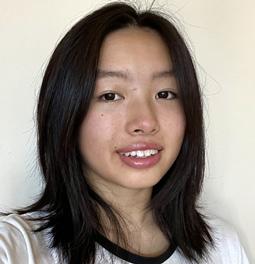
CO-LEADER OF THE SDC & ATTENDEE

104 members of Harker’s Speech and Debate team finished strong at tournaments at UC Berkeley and Stanford University during February break.

4 students advanced to final rounds
schools at Berkeley Semifinals or better in
40
The Stanford and Berkeley tournaments, which took place the weekends of Feb. 11 and 18 respectively, are considered incredibly prestigious and important by the entire speech and debate community. In particular, doing well in the Berkeley tournament is a yearly goal for Harker Speech and Debate, and each and every year they hope to bring back new awards, experiences and life long memories of a challenging and laborious, yet fulfilling and impactful weekend.
Upper school Speech and Debate teacher Scott Odekirk oversaw 104 high school and middle school students attending the tournaments. Of those 104, 40 advanced to the next round, known as the elimination rounds. 20 of those 40 students moved on to the quarterfinals and four students advanced to the finals in their respective rounds.
“The champions in a particular event probably spend more than two days on a campus from dawn until dusk, either preparing, or delivering speeches with a lot of pressure on them, and a variety of judges who they can’t predict what their individual perspectives or likes are,” Odekirk said. “These tournaments really represent a huge accomplishment and sacrifice.”
On top of being individual champions, one of the most rewarding aspects of
these tournaments are the sweepstakes awards. Given not to individual participants, but to the entire school, these awards measure the strength of the entire team by counting the individual scores of every attendee from that school in both speech and debate. The 3 teams with the largest number of high-scoring individuals win the 3 sweepstakes awards that are given out each tournament. Harker won first place overall at Berkeley.
On the day of the event, students left to compete at 7 a.m., beginning warmup activities and preparations for their speeches and arguments once they arrived at the tournament. Their first speech or first round commenced at 8 a.m., and each student typically participates in four or five rounds. Students may not finish
until 10 or 11 p.m. at night. Those who perform well on the first day continue to compete on subsequent days.
These Speech and Debate events serve as more than just competition, as students can make friends and meet new people from all grades. Senior Deeya Viradia, who competes in the Lincoln Douglas debate event, especially treasures the tournaments for how they bring Speech and Debate students together.

“It’s such a great experience to be able to meet everyone on the team and really have a whole community environment,” Deeya said. “[Our awards are] a really good reflection of the strength of our team overall.”
Visit harkeraquila.com for full article.

Students, faculty and special guests shared aspects of their cultures through dance, music and poetry during the Cultural Performance Assembly on Feb. 27.


Planning for the event began months earlier, with the Student Diversity Coalition (SDC) calling for performers in January. Although SDC arranged logistical details, the focus of the assembly was to feature the diversity of the Harker community.
“What’s nice about the Cultural Performance Assembly is that it’s less of something manufactured by the SDC and more of us inviting the community to do something in front of the entire school,” SDC Student Leader Fern Biswas (10) said. “When it came to submissions, we were pretty open. It was just, ‘If you have something to perform, go for it.’”
upper school.
“The song talks about how the sky is vast, but wherever the swan is, please take my thoughts to my hometown,” Wang said. “And it reminded me of the line, “Once an eagle, always an eagle,” something that we write on the alumni magazine. I wanted to show a little bit about Chinese folk dance, and secondly, it’s a nice connection to the Harker community and alumni.”
Leadership Conference (SDLC) that inspired them to explore slam poetry.
Next, Dance Club took the floor with choreography to the Bollywood song “Disco Deewane” from the movie “Student of the Year.” Members of the Latinx Affinity Group then performed “Baile Folklorico,” a dance specific to Latinx culture featuring colorful skirts and intricate footwork.
there with her son made it extra special.”
Director of Annual Giving Jun Wang opened the assembly with a folk dance to the song “Swan Goose” in the style of the Chinese Inner Mongolian Urad Tribe. Wang decided to participate in the assembly after recognizing parallels between the lyrics of “Swan Goose” and her role at the
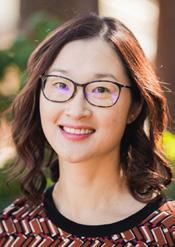

Following Wang’s dance, Fern delivered a spoken word performance of “What Are You,” a poem they wrote to reflect on their experience of being East Bengali, an ethnic minority among South Asians. Fern noted that while they had always enjoyed writing poetry as a way of expression, it was the “unapologetic” performances they witnessed at the Student Diversity
“I was amazed by how well the students and faculty each represented their cultures,” audience member and upper school history teacher Jonathan Rim said. “I really liked the performance by Latinx Affinity Group in particular. I thought it was really special that [upper school mathematics teacher Jeanette] Fernandez participated and shared her culture with her students, and the fact that she was up
Following “Baile Folklorico,” Karina Chen (12) performed “The Little Shepherd,” a song tracing back to ancient folk music from the Southern provinces of China, on the Chinese flute. The assembly ended with a performance by the professional Bay Area ensemble “Ballet Afsaneh” that combined Persian dance and storytelling to depict the Silk Road.
“After seeing people’s reactions to the performances, I hope it made some sort of impact in terms of how people see these issues, but also I want to say it’s worth the risk,” Fern said. “I would encourage anybody to take the risk if they can to share parts of their identities because it’s definitely worth the risk.”
Visit harkeraquila.com for full article.



school year, this conference served as an essential connection between the members of the team.
In preparation for the competition, delegates drafted ten-page position papers, where they each conducted research on the committee and country they were assigned for the NHSMUN conference. Sasha Masson (11), a Director General of the Harker Model UN club, embraced the opportunity to try out a new committee as a judge, which involved reading many court cases and approaching the conference from a new perspective.
“I’m very nervous because I’m in a committee that I’ve never been in before,” Sasha said. “As a judge, everything is different than what I do in a usual Model UN committee, so this will be an exciting experience for me.”
“We’ve been hosting a bunch of introductory events this year, and we’re hoping on growing our club,” Sasha said. “Espe-
Harker students attended the National High School Model United Nations (NHSMUN) Conference hosted in New York on March 10 for the first time since the COVID-19 shutdown.
Thousands of students from countries across the world gathered together
to discuss global dilemmas and brainstorm how to solve them. Harker’s team left for New York on March 8 and had the opportunity to sightsee around New York and spend time together as a team before the conference. They visited famous landmarks and historical areas in the city, as well as tried well-known food places. As the second to last competition of the
The club also hosted a preparation session on March 3 during long lunch. The session was mandatory for all delegates attending the New York conference, but underclassmen and anyone interested in exploring the activity were encouraged to stop by. In addition to covering the details of the conference, the leadership team planned fun activities and games, including a themed speed-dating activity to practice researching various countries and their current events.
cially this year, there are a lot more freshmen we are encouraging to come and try out Model UN.”
Visit harkeraquila.com for full article.
“I wanted to show a Chinese folk dance, and [this piece] had a nice connection to the Harker community”
JUN WANG
DIRECTOR OF ANNUAL GIVING
“We’ll be able to meet people from all over the world”
SASHA MASSON (11) MODEL UN DIRECTOR GENERAL PROVIDEDBY SASHA MASSON
A.M.
The 7.8 magnitude earthquake hits Gazientep in southern Turkey, with strong tremors in Syria, Lebanon and surrounding areas
4:28 A.M.
A 7.8 magnitude earthquake hit areas of southern Turkey and northern Syria on Feb. 6, resulting in at least 50,000 deaths and leaving hundreds of thousands homeless.
According to the March 2 U.S. Agency for International Development (USAID) fact sheet, there have been 51,089 reported deaths from the earthquake and the dozens of aftershocks. The first quake struck southern Turkey, near the Bab al-Salama crossing and the Syrian border, with a magnitude of 7.8 and a depth of 11.1 miles in the early morning, followed by a second quake of 7.5 magnitude further north.
USAID has projected nearly 175,000 damaged buildings due to the earthquake, leading to the displacement of millions. The disaster has also caused rising food costs in Syria, exacerbating the effects of war and conflict in the rebel-held regions already.
3:00 P.M.
The death toll in Turkey and Syriadue to the quakes surpasses 1,000
“I’m a U.S. citizen, and my parents are from China, so I don’t like seeing this kind of tension” WERDNA
KYLE LI (10) STUDENT
“It was a wise decision for the U.S. not to shoot down the balloon right away because then it would set the precedent for other foreign countries”
FIONA YAN (11) STUDENT

“I believe the people of the U.S. and China share common values, and there are ways for the government and people to build better communication”
WERDNA
“It was really sad to hear because I already knew that Syria and Turkey have really high poverty rates, and a lot of the damage that was caused by the earthquake was because of the weak infrastructure,” Sonya Apsey (11), co-founder of the upper school’s Middle Eastern Student Association, said. “As we find more and more people, more and more survivors and those who passed away in the earthquake, it’s really heartbreaking to see families and their reactions.”
On Feb. 6, USAID’s Bureau for Humanitarian Assistance deployed a Disaster Assistance Response Team to support the Government of Türkiye through humanitarian efforts. They have responded by providing equipment for search and rescue missions, delivering emergency food resources, and supporting other

organizations to provide medical services to affected regions in Syria.
“As we find more and more survivors and those who passed away in the earthquake, it’s really heartbreaking to see families and their reactions”
CO-FOUNDER“I am devastated by the news of the
earthquake that hit Türkiye and Syria this morning … My thoughts are with the victims and their families, many of whom were already grappling with brutal losses from the war in Syria, including refugees and their host communities,” USAID Administrator Samantha Power said in a statement on Feb. 6. “The United States is committed to providing immediate, life-saving humanitarian assistance on both sides of the border to help communities recover from this disaster.”
These efforts are part of the U.S.’s pledged contribution of $85 million in aid on Feb. 9, followed by an announcement of another $100 million of aid on Feb. 19.
For those interested in donating, the Center for International Disaster Information has published a list of reliable organizations responding to the earthquake that receive donations.
the presence of another Chinese balloon over Latin America on Feb. 2. Three more flying objects were shot down on Feb. 10, 11 and 12. Although these objects did not seem to be used for spying, they were at altitudes where they could pose a threat to commercial aircraft. Nonetheless, Canadian Prime Minister Justin Trudeau warned of a possible correlation.
“There is some sort of pattern in there,” Trudeau said in a news conference in Whitehorse, the capital of Yukon. “The fact we are seeing this in a significant degree over the past week is a cause for interest and close attention.”
YI JIANG UPPER SCHOOL MANDARIN TEACHER


“There’s a national security concern if this has been going on undetected. It’s good that we’ve observed the balloons sooner than later”
WERDNA
The United States shot down a Chinese balloon on Feb. 4 over South Carolina, prompting a rise in tensions between the countries. Other objects were discovered in the following weeks flying over North America, although American officials could not ascertain whether they were also used for spying. China responded with a claim that the balloon was an off-course civilian aircraft and that the United States overreacted.
EMMETT CHUNG (12) STUDENT

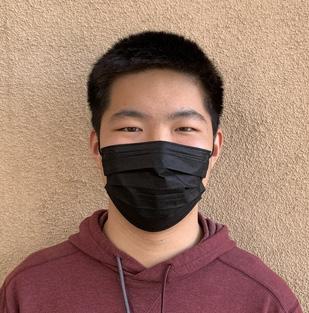
The balloon first entered American airspace on Jan. 28 near Alaska before entering Canada. It re-entered America on Jan. 31 before flying across the country, where it was destroyed in South Carolina. According to officials, the balloon’s trajectory flew over Malmstrom Air Force Base, one of the three bases in America where intercontinental ballistic missiles are stored. Although meteorologists have
not ruled out the possibility that the balloon was carried astray by winds, officials claim that the balloon hovered over the Malmstrom base, possibly to survey the area. After being discovered, the balloon seemed to stop transmitting data.
On President Biden’s orders, the balloon was shot down by the United States Air Force on Feb 4. using a small missile. The debris from the balloon landed down in shallow waters, and the Coast Guard conducted operations to retrieve the balloon through Feb. 17. During the operations, the Coast Guard was able to recover most of the wreckage of the balloon, including its payload. The United States rejected a Chinese request to return the balloon.

According to AP News, the United States increased the sensitivity of its air defense system after discovering the first balloon, leading to the discovery of several other aircraft. The Pentagon reported
The discovery and shooting of the balloon provoked a rise in tensions with China. Along with the recent balloon, the Pentagon reported that at least three balloons were flown over America during the Trump Presidency and another one during the Biden Presidency. China denied any accusations of spying and protested the shooting of the balloon. Additionally, they claimed that the United States had flown at least ten balloons over Chinese airspace, which Washington quickly denied.
As a result of the balloon’s discovery, Secretary of State Antony Blinken canceled a trip to Beijing orginally intended to ease tensions between the countries. Blinken also sparred with his Chinese counterpart Wang Yi during the Munich Security Conference that took place from Feb. 17 to 19. Additionally, the United States imposed sanctions on six more Chinese companies, and House Foreign Affairs Committee Chairman Michael McCaul commenced a hearing titled “Combatting the Generational Challenge of CCP Aggression” on Feb. 28. Visit harkeraquila.com for full article.
President Biden instructs USAID to provide support to affected regions
A 6.7 magnitude quake is the first aftershock, with dozens more to come in the following hours
8:00 A.M.
When Motti Eisenbach created The Crimson Scales, a custom fan-made expansion to one of the most well known board games in the industry, Gloomhaven, he never imagined that it would become so popular that he’d soon become an original game designer.
Near the beginning of the pandemic, Eisenbach bought the board game Gloomhaven, a euro-inspired dungeon crawler, for over 100 dollars. After just a few months, he started to dabble with custom content, creating his own classes for the game and sharing them online, following the advice of the designer of Gloomhaven, Isaac Childres, who encourages fans to create their own content for the game. Eisenbach’s project grew and grew until it eventually became an expansion around two thirds the size of Gloomhaven, with his project The Crimson Scales quickly containing around 150 hours of scenarios.







exciting for me to see everything come to life, and I really enjoyed the process of [designing] Crimson Scales too. Based on that experience, I realized that I got this experience of creating a game, developing it and getting the word out there, so I wanted to take a shot at my own game.”

After the wildly successful printings of The Crimson Scales, Eisenbach founded Addax Games earlier this year. The Addax Games team are currently working on Rove, a dungeon crawler board game that will come to Kickstarter, a crowdfunding platform, in August 2023.
“As time went on, I got into the community of other creators, and I decided to make a mini-campaign of 10 scenarios and four classes,” Eisenbach said. “Then as I was doing that, I got more ideas for classes, and then it just piled on and on. ”


Gloomhaven is already a niche game since massive board games that require large time commitments often prove difficult for many groups, so a custom expansion for such a game may seem inaccessible to most. Yet, The Crimson Scales defeated all odds and raised over $400,000, all of which went to the print shop PrintNinja for making the game’s materials. Eisenbach originally intended to simply release the files to the community to let them print on their own, but many people wanted to have the game mass-produced. After the popularity of the first printing of The Crimson Scales, Eisenbach decided to host a second printing of the game, for those who missed out on the first one.
“As I went through that process, I really enjoyed it,” Eisenbach said. “It was




When Eisenbach started Addax, he recruited Charles McCloud, who he met through the Gloomhaven Custom Content Unity Guild (CCUG), an online community which creates high quality custom classes for Gloomhaven, and helped him on The Crimson Scales and later became Addax Games’ Lead Writer, creating all of the game’s story. McCloud enjoys working with Eisenbach and ap preciates the freedom he has in his work.
“Working with Eisenbach is frighteningly liberating,” McCloud said. “Eisenbach knows what he has hired us for and trusts us fully to accomplish those ends.”

Visit harkeraquila.com for full article.

saahil herrero
“I never expected it to blow up the way it did, but once it got a lot of positive reception from the community, we grew the project to where it came to be”
MOTTI EISENBACH
ADDAX GAMES BOARD GAME DESIGNER
The John Near & Mitra Family Scholar Grant Program and Chen Lin Family Faculty Grant Program will host the annual Near Mitra scholar salons virtually on March 13, 14 and 16 providing the nine scholars with the opportunity to share their research with the Harker community.
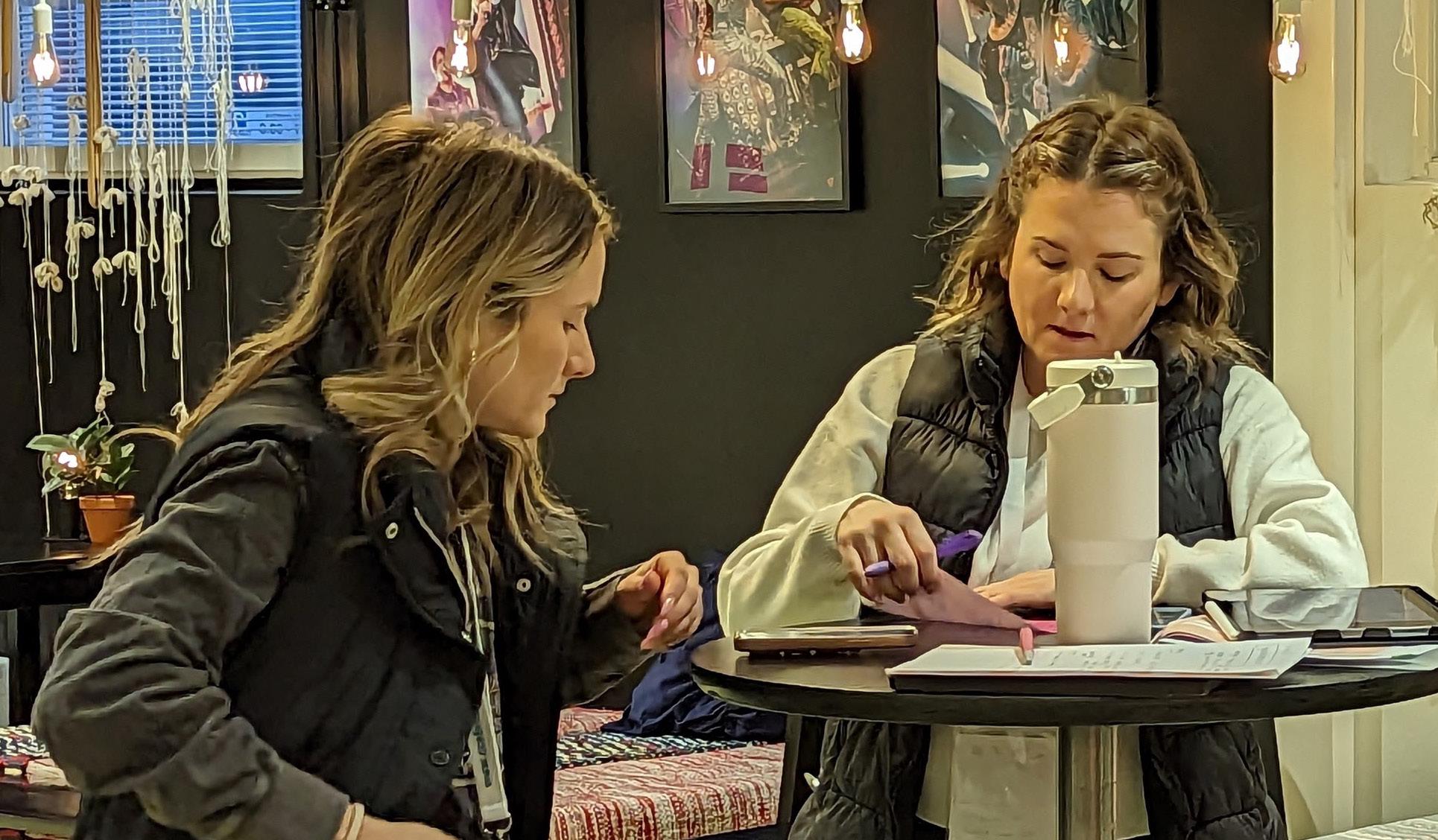
The Near Mitra research program supports select seniors to conduct humanities-based research, writing a 25-60 page paper on a topic of their choice. During the 45-minute salons, each scholar presents their work and answers questions. Near Scholar Sabrina Zhu (12) will begin the presentations. Sabrina researched Ralph McGill’s work in journalism and its impact on the Civil Rights Movement.
Next, Mitra Scholar Alex Lan (12) will share his work examining the Peruvian “gastronomic revolution” in the context of the 1980-2000 civil war.
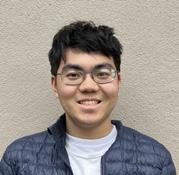
Mitra Scholar
Michelle Jin (12), who

Mar. 13 3:45 - 4:30 P.M.
DEDIVORP
studied Kim II-Sung’s efforts at “purifying” the Korean language, offered advice to those looking to join the programs.


Mar. 13 4:45 - 5:30 P.M.
To what extent has Peru’s “gastronomic revolution” served as a vehicle of cultural, social and economic resurgence following the 1980-2000 civil war?
DEDIVORP
B Y A LEX LAN
ALEX LAN (12) MITRA SCHOLAR
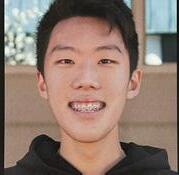
Mar. 14 3:45 - 4:30 P.M.
How does Warsan Shire’s poetry expose Muslim surveillance in twenty-first century Nairobi, evoking elements of Foucault’s panopticon?
H A RKER AQUILA
SARAH MOHAMMED (12) MITRA SCHOLAR
Mar. 14 4:45 - 5:30 P.M.
To what extent did indigenous languages in Chilean regions influence modern Chilean Spanish?
DEDIVORP B Y M CHELLEJIN
“I would say [my] biggest advice [to future Near Mitra scholars] is in the summer before you actually enter the formal research process, open up your imagination and go broad in seeking larger seminal works because in that way, you get to span a lot of the scholarship that’s already been written about
Mar. 13 5:45 - 6:30 P.M.
To what extent did Kim Il-Sung’s attempts to “purify” the Korean language reinforce the ideology of juche (“self reliance”)?
MICHELLE JIN (12) MITRA SCHOLAR


Mar. 16 4:45 - 5:30 P.M.
How did Atlanta Constitution reporter and editor Ralph McGill harness techniques of New Journalism and craft appeals to the paper’s Southern readership?
SABRINA ZHU (12)
NEAR SCHOLAR
Mar. 14 5:45 - 6:30 P.M.
How did systematic disadvantages against housing activists shape their defense of the International Hotel in the 1970s?
DEDIVORP
To what extent did the internment of Japanese Americans during WWII cause cultural homogenization and revitalization of Japanese music subculture and performance?
DEDIVORP
B Y AHUL MULPURI
RAHUL MULPURI (12) NEAR SCHOLAR
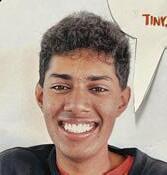
Mar. 16 5:45 - 6:30 P.M.
To what extent was Allen Ginsberg influenced by the modernist movement? In which of his works can that impact, if any, be seen?
DEDIVORP B Y A USTINAXU
AUSTINA XU (12) NEAR SCHOLAR
H A RKER AQUILA
topic,” Michelle said. Mitra Scholar Sarah Mohammed (12) will share her work analyzing Warsan Shire’s poetry about Muslim surveillance and how it relates to Foucault’s model of the panopticon.
Mitra Scholar Isha Moorjani (12) will present her research on indigenous languages in Chile and their influence on Chilean Spanish, as well as Nahuatl’s impact on Mexican Spanish.


ISHA MOORJANI (12) MITRA SCHOLAR
Mar. 16 3:45 - 4:30 P.M.
To what extent did the salience of the issue of immigration accompany the rise and fall of die Republikaner?
S H A MOORJANI EMMETT CHUNG (12) MITRA SCHOLAR

“You really do need to truly love your topic because you are going to spend a lot of time with that topic,” Emmett said. “There’s going to be times where it’s tough, and there’s going to be times where it’s rewarding.”
Rahul Mulpuri considered the impact of Japanese American Internment on Japanese music subculture. Despite the broad scope of the assignment, his mentors’ guidance helped elucidate the process.
“You don’t have a teacher guiding you like there would be in a classroom,” Rahul said. “[Your mentors are] just helping you narrow down different research, stay on topic and figure out how to combine [everything] together.”
Lastly, Near Scholar Austina Xu (12) examined American poet Allen Ginsberg and the modernist movement.
NEAR SCHOLAR
B Y S TEPHENXIA STEPHEN XIA (12)
Near Scholar Stephen Xia (12) investigated the defense of the International Hotel in the 1970s compared to other housing activist movements in 1960s-1980s San Francisco.
Mitra Scholar
Emmett Chung explored how immigration impacted the trajectory of the German postreunification era Republikaner party.
“I’m glad that Harker offers an opportunity like this [for] humanitiesbased research, for me to even look into literature and devote a big body of work towards an interest that I have, because I know not a lot of other places would do that,” Austina said.
Visit harkeraquila.com for full article.
vika gautham & katerina matta
Famously known as the happiest country in the world, Finland boasts marvels like the Northern Lights, reindeer jerky and free healthcare. Yet one of its most renowned accomplishments is the school system; despite skipping kindergarten to delay student enrollment until the age of seven and not assigning homework, Finland consistently ranks as one of the best education systems globally, according to studies conducted by organizations like the World Economics Forum. To learn more about the processes behind this success, teachers from the upper, middle and lower school campuses visited a five day professional development workshop organized by the Council for Creative Education (CCE) Finland during the week of Feb. 13.
Teachers began the conference with a workshop on Finnish culture and history, followed by three days of visiting various schools and observing classes. On the last day, they partook in an action-oriented session to discuss what they had learned and what they would like to incorporate into their classes at Harker.
Overall, the Finnish school system encourages students’ self-sufficiency, whether through leaving students to do independent work during class time or having them take public transport alone from an early age. Upper school English teacher Dr. Beth Wahl frequently observed

the Finnish students’ resulting independence and the bond that forms between the teachers and the students.
“When we talked to the kids from the middle school, there was no teacher sitting there, telling them what to do or reframing what they were saying,” Wahl said. “It was just the kids talking to us. There’s a tremendous amount of trust between teachers and students, and they don’t feel like they have to censor the kids or any need to tell them what to do. I found that really empowering, both as a teacher and as a parent myself, to see that kind of trust.”
Harker teachers also noticed a lack of competition in Finnish schools, with students appearing less stressed in comparison to those of the Harker community. While Finnish students face many obsta-
DEFINING
1-2
in their studies to uplift their community. Upper school history teacher Mark Janda highlighted the focus on developing not individuals but a society and culture.
[building] it is going to take a generation.”
cles similar to those American students experience, like college entrance exams, the Finnish administrators underscored the importance of students participating
“Finnish culture, to begin with, does not particularly prize competition,” Janda said. “And to some degree, they seem to shun competition. They have relatively little wealth disparity, and they have a government school funding system that funds all schools. They explained that for 100 years it has been a belief that if you want to build a particular kind of society, you have to start with children. So you build your society with schools, and you accept that
Many of the teachers arrived back home with new ideas and principles to implement into our own community and that would help students and faculty members thrive.
“First, we can think about our values, and how to define success,” Janda said. “We can look at it [as] about achieving a sense of contentment, a sense of responsibility, but also with a connection to the rest of your community, instead of grades and college admissions. So, I would like to think, how do we redefine our values?” Visit harkeraquila.com for full article.
“I found that really empowering, both as a teacher and as a parent, to see that kind of trust”
DR. BETH WAHL UPPER SCHOOL ENGLISH TEACHER



Harker upper school’s show choir, Downbeat, participated in the quarter finals of the International Championship of High School A Cappella (ICHSA) on March 10 at John Burroughs High School, competing against seven other a cappella groups from California.
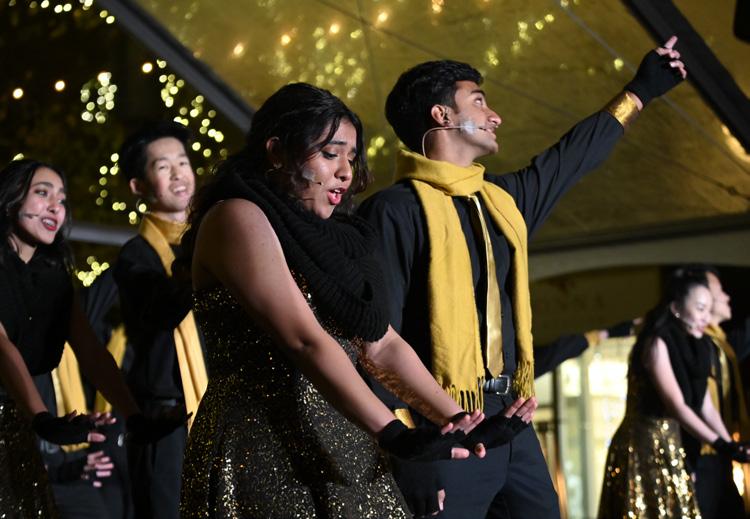
Since the beginning of the school year, Downbeat singers have been working with upper school vocal music teacher Jennifer Sandusky and performing arts director Laura Lang-Ree in order to prepare for the competition. The group performed three songs, which center around Downbeat’s theme for this year: advocating for women’s rights.
“Ms. Lang-Ree and I usually start with trying to create a unifying vision so that there is a storyline for the performers to emotionally follow in the music, and for this year, we chose the loose topic of human rights,” Sandusky said. “We tried to focus on how one takes action when faced with injustice in society.”
At a school like Harker, distance is inevitable. It hides between campuses, between ages and between the cracks left by the pandemic. United Voices, held on March 3 for the first time since 2018, examines what it means to bridge those gaps.
Upper, middle and lower school choirs performed in a two-hour-long showcase of Harker’s vocal talents. Opening the show was the lower school Concert Choir performing “Dona Nobis Pacem” by Mary Donnelly and arranged by George L.O Strid. Following, they performed “When I Grow Up” from Tim Minchin’s “Matilda.” Stomping their feet and exaggerating their discontent, the lower schoolers left the audience chuckling as Dynamics took the stage.
“When 9 and 10-year-olds perform, they’re so genuine,” upper school vocal music teacher and concert organizer Jennifer Sandusky said. “I asked [the older kids] to watch them during rehearsal and bring that inner child with them when they go into their own performances. The way young children learn and get into their endeavors can be very informative for us.”
Dynamics, led by the energetic conductor Kristin Pfeifer, performed “Kusimama” by Jim Papoulis. Following them was Razzmatazz, the middle school’s new male-identifying ensemble, performing “Storm” by James DesJardins. During the dress rehearsal, members of both ensembles forgot to take their entrances, having to be shepherded onstage by the tech crew.
“At first, mistakes are something we laugh at,” upper school vocal teacher Susan Nace said. “When the concert gets closer, those mistakes hurt a little

more. When there are mistakes, it’s lovely to see people go ‘That’s okay. You can do this. I’m going to lift you up.’”
Harmonics performed Roger Emerson’s arrangement of “Lullaby of Birdland” by George Shearing. The middle school show choir performed with white hats, dancing across the stage and weaving through formations. Vivace, the middle school treble choir, followed with “Poor Wayfaring Stranger.” Closing off the middle school portion of the show was the middle school Concert Choir with Christi Jones’s “Awakening.”
“I would liken [United Voices] to a musical chord. Chords have beautiful and intricate notes that, when coming together, sound beautiful”
KRIS ESTRADA DOWNBEAT MEMBERLed by Susan Nace, Dolce Voce performed “What Happens When a Woman?” by Alexandra Olsavsky. Section leader Saanvi Bhargava (10) discusses what translating the emotions and concepts discussed to actual performance takes for her.
“It starts with getting out of just memorizing the song,” Saanvi said. “I figured out what the piece meant to me and found a specific point of view. I started to really feel the song and incorporating that into the body percussion and the actual singing.”
Rhapsody, the upper school tenor and bass ensemble, joined Dolce Voce onstage to form Festival Chorus. They performed Donald Patriquin’s arrangement of “Savory, Sage, Rosemary, and Thyme,” a Canadian folk song, together. Upper school English teacher Christopher Hurshman accompanied Rhapsody for “All the Diamonds” by Bruce Cockburn, arranged by Larry Nickel.
Razzmatazz and Downbeat’s tenors and basses then joined Rhapsody for “The Wellerman,” a New Zealand sea shanty. Cantilena then followed with a reprise of the opener “Dona Nobis Pacem” and “Magic Song for One Who Wishes to Live
from ‘Three Songs of Light.’
“[Magic Song] is a ritual song from the Inuit people,” Nace said. “It’s a song hoping that someone [you] love will choose to live. It’s hard to bring out those personal feelings, yet at the same time when we sing, we sing about life. To express humanity.”
For the finale, all the choirs congregated on the stage, spilling out of the risers, for two songs: “The Harker School Song” and “Up on the Mountain Shouting,” a rousing gospel featuring stomps, lower schooler dances, thunderous claps and cheers all around.
Though the ensemble’s time all together was small, the bonds of mentorship and friendship formed readily. When blocking pieces, upper schoolers would often drag younger kids to their positions. Crew member Hannah Levanon (10) describes watching rehearsals.
“There’s something about these large casts you don’t get with other [productions],” she said. “It’s sweet to see everyone in the audience watching during rehearsal.”
To eschew the unique identities of each campus, each choir and student in the pursuit of zero difference between them would be foolish, but great beauty can be found when those individual components are brought together and worked towards, in the words of Sandusky, “the service of something bigger than [themselves]”.
“I would liken [United Voices] to a musical chord,” Kris said. “Chords have beautiful and intricate notes that, when coming together, sound beautiful. All of the Harker choirs coming together, how much passion and complex harmonies we can create, it’s something unlike anything I’ve ever seen.” Visit harkeraquila.com for full article.
Working with arrangers to realize their vision of the setlist, Downbeat began learning parts and establishing choreography. The songs took several revisions before they were satisfactory. “Just a Girl” was only finalized a month before competition. Downbeat member Shayla He (11) describes how they maintained group chemistry during this stressful time.
“Trust is a huge part of the process,” she said. “It’s important to let the teachers give notes, not the students. Going into [competition] we really just want to hype each other up and feel pride in each other.”
“Just a Girl” began the emotional arc, bringing anger and sass as it focuses on a girl drained by societal pressures. “Pure Imagination” followed, bringing the audience to envision a world without injustice, and “Come Alive” ended the set with a rally call to action.
Inspired by recent events, Lang-Ree and Sandusky wanted to emphasize the numerous conflicts women face on a daily daily basis. Coincidentally, their quarterfinals date was pushed to March, Women’s History Month.
“The theme of empowering women came to us last spring when Roe v. Wade was overturned, and we always look for a theme for a cappella competitions because it allows for a storyline that not only the audience members can relate to but the singers as well,” Lang-Ree said. “It was a perfect time to bring the spotlight to this and highlight an issue that women struggle with all the time.”
Visit harkeraquila.com for full article.
 ALISON YANG
ALISON YANG


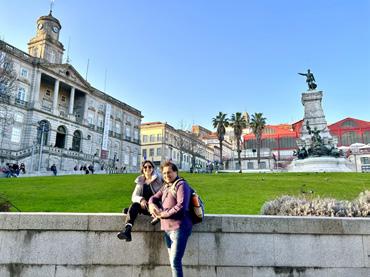
 ariana goetting & sid sanghari
ariana goetting & sid sanghari

February break offers a much-needed respite to high-school students who juggle grueling schedules, intensive workloads and stressful routines on a daily basis. It provides us an opportunity to take a step back and recharge our batteries before returning to the demands of the rest of the school year. For some, this feeling comes from catching up on sleep and TV shows. For others, it comes from spending time with friends and family. But to many students, it comes from exploring and traversing a new and exotic destination.
From paragliding in Kaanapali to wandering the streets of Lisbon, upper school students seized the opportunity to embark on new adventures, discover new cultures and create unforgettable memories. Some students, like Jessica Tang (12) and Minal Jain (9), made last-minute decisions with their families to explore new places, while others, like Jack Ledford (11), had been planning to visit the location for a while. But regardless of how they got there, all the students who traveled during February break enjoyed their time away from school and gained a new perspective on the world around them.
Exploring new places is not only a great way to break free from the daily grind, but it’s also an opportunity to broaden our horizons and learn about different cultures. These students have shown us that there is a whole world out there waiting to be discovered and explored. So, whether it’s trekking through the mountains or trying exotic cuisines, February break provides the perfect opportunity to explore and create memories that will last a lifetime.
Visit harkeraquila.com for full article.
“If you’re into amusement parks, I’d recommend going [to Florida]. They’ve so many parks in such a small area that if you don’t have that many days, you can get a lot done.”

JACK LEDFORD (11)


“[In Maui], you can either have the tourist experience and surf and go to a nice hotel, or you can learn about the native culture and visit the national parks and sights.”







JESSICA
alison yang

Nichols Atrium is typically an echoey cavern inhabited by backpacks, fish and the occasional robotics student. Yet, over a rainy weekend, tan partitions half a story high begin to populate the area, a labyrinth of beige and wheels. The days pass, and students lugging artwork flood the atrium, a surge set to the bells. Every night, the walls of Nichols go to sleep carrying more art than they woke up with.
The Advanced Placement (AP) Art Exhibitions opened on March 6, featuring four to five pieces of artwork each from the 22 students who are taking AP Studio Art. The exhibited works are part of the students’ Sustained Investigation portfolios, a 15-image component of the final AP submission.

Students began installing their work last week in the Nichols building, with 3-D and 2-D work occupying the majority of the downstairs floor and walls and 2-D work occupying the upstairs walls. The spaces were randomly assigned among the students.
Artists began their sustained investigations with ideation and discussions
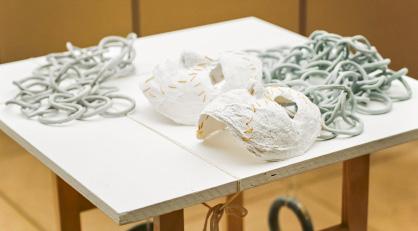
“If you’re a foodie, [Portugal] is for you. The food quality is fantastic, especially their seafood like octopus, shrimp, mussels and fish.”
with their advisors. To draw out the students topics, teachers each used their own tactics. Martinez, for example, gave every student a sketchbook with the instructions to fill pages every week. Many students also created inspiration layouts, either in physical scrapbooks or digitally.
Often, students pull topics from what is familiar. Family, horror, body image, dreams, injustice. In the words of Aguero Esparza, the AP “is a process that helps [students] identify their way of working more than anything.”
AP-3D student Alena Suleiman (11) chose webs as her topic for the Sustained Investigation. Pulling from both past and current experiences, she found the connections between what she was learning in class and what she was living, seeing the experiences connected in a sort of abstract web.
“Webs signify everything,” she said. “There’s the general spider web, but I’m
reinterpreting webs and showing them in different arrangements to explore these different associations. [My goal] is for [viewers] to really immerse [themselves] in the piece.”
AP Drawing student Eva Li (10) chose the topic of horror for her investigation. Much of her previous work was defined by rigid constraints, so she wanted to try something different. Though the road was littered with bumps from time constraints to learning to adapt to the requirements of the AP, Eva thinks of her exhibition fondly.
“I hope people enjoy my art,” Eva said. “I want it to impact them. Whether I’m introducing them to the gorier and non-traditional side of art, or if they just like my work, I’m happy.”
The exhibits will remain on display until March 10. Upcoming initiatives by the Art Department include the remaining Honors Directed Portfolios (HDP).
Visit harkeraquila.com for full article.
“The Hagia Sofia was phenomenal. It was majestic. In Istanbul, also the Dolmabahçe Palace was really interesting and they could preserve a lot of the history of it.”



MINAL JALIL (9)


desiree luo & katerina matta
“For [Best Picture], I’d go with ‘The Banshees of Inisherin.’ I loved its charm and how its artistic mastery captured the deepest and darkest heartstrings of envy, jealousy, desire and confinements.” SED OULEER & K A T ERINAMATTA
ETHAN GUAN (10) STUDENT
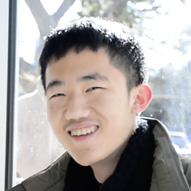
“With ‘Everything Everywhere All At Once,’ the amount of impact it’s had on people and the entertainment industry especially for Asian people, I’m rooting for [Michelle Yeoh].”
ERINAMATTA
RACHEL NING (12) STUDENT

“My pick for [Best Director] would be the Daniels given how they jumped onto the scene. Not really a directing pair that was very well known beforehand, but this year really left their mark.” OULEERISED &
EDIS MESIC (11) STUDENT
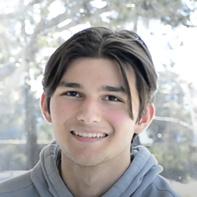
“I really liked [Austin Butler’s] performance in ‘Elvis.’ It was this raw portrayal of Elvis [Presley], and it showed both his showmanship but also the abuse he was put through.” OULEERISED & K A T
MINAL JALIL (9) STUDENT

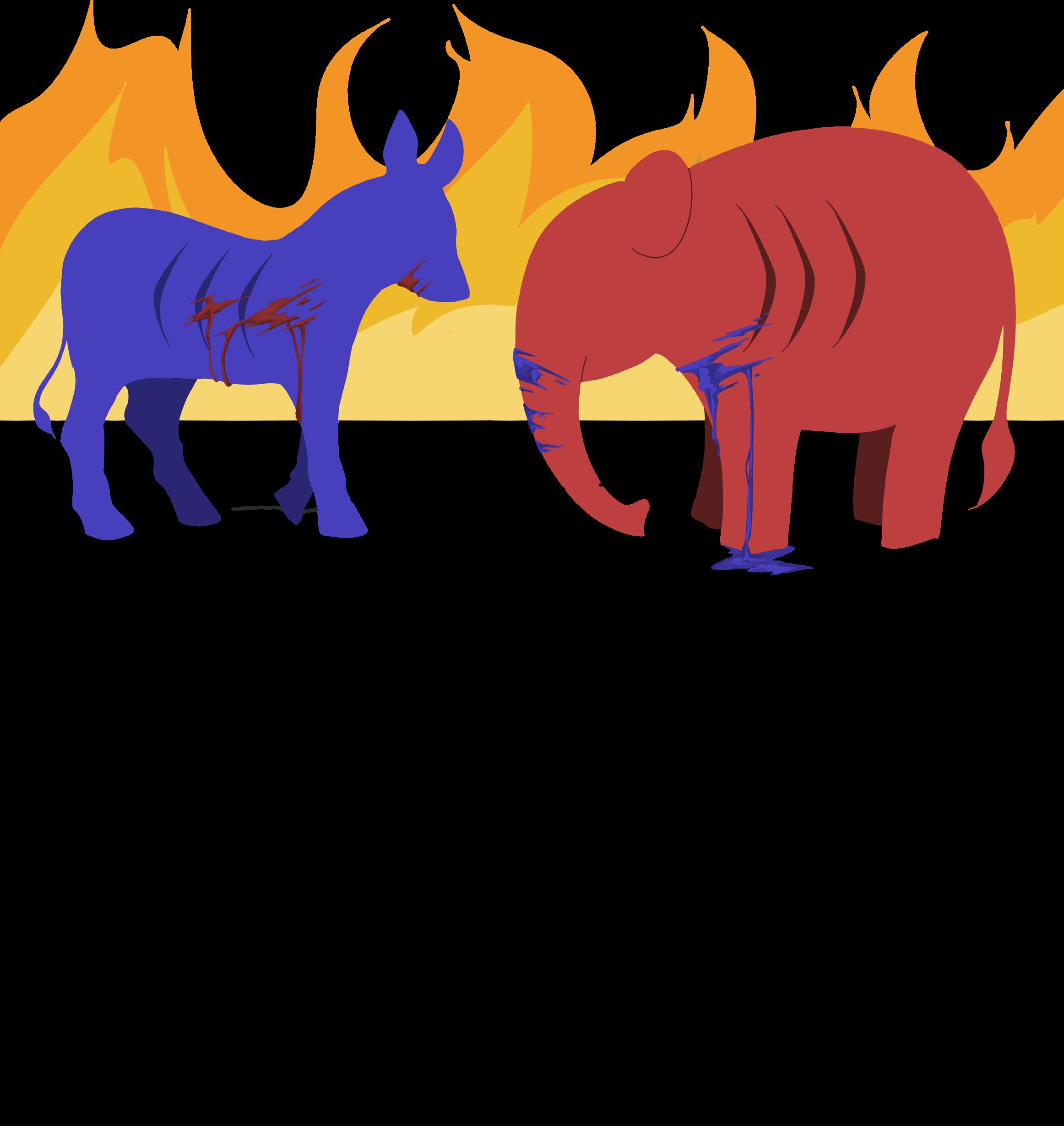

Even a century and a half after Edgar Allan Poe’s death, his works continue to gnaw at me; their biting twists and subtle nuance are truly captivating. Deftly weaving between reality and insanity, Poe casts an illusory atmosphere over his compositions, complemented by crisp wit and cynical undertones. Alas, what more could be desired?
5. “The Sleeper”
A sleeper indeed, few critics rank “The Sleeper” as one of Poe’s better works. Poe rewrites the classically gothic cemetery as a place, teeming with wildlife, juxtaposed to the death it represents. The imagery and vivid descriptions are what makes the poem work, but it just lacks that Poe-esque flair. Neither truly macabre nor manic, “The Sleeper” is certainly a well-written poem, suitable for a recreational read.
4. “Annabel Lee”
ership is able to enact their own policies and proposals cus. Similarly, Democratic leaders tend to lean more left on issues such as crime, immigration or education compared to nect between party leadership and their sure to stick to party lines rather than to longs in the hands of the few, which has only led to more polarization between the portant and irrelevant, leading the U.S. to lag behind other democracies with a 66%
The two-party system has led to a ship, which only contributes to more problems surrounding voter apathy. This
Visit harkeraquila.com for full article.
Language first evolved around 50,000–150,000 years ago, and continued to grow and develop alongside humans until the present day. Words were created as means to express oneself, to communicate ideas to those around us. Swear words should not be any different.
Swear words do not need to be placed on the undeserved pedestal they reign upon, because their nature as strong language was exactly their purpose, and to shy away from them would be to avoid more powerful expressions of self. The pedestal itself is a part of the problem: we, as a community, give the words their potency. We create a negative feedback
loop in which we fear a certain subset of words, making them more malicious, and so the cycle continues. We need to understand the words we use, not to strip them of their power but instead to harness their power for good.

In today’s culture, ‘swear words’ are simply words relating to the taboo, be it
glish-speakers originally predominantly related to religion, with blasphemous and religiously profane language being the taboo. In modern times, a shift occurred, transitioning language regarded as profane from the religious to the secular, replacing heresy with more physical terms as the new sinful words.


Researchers at Keele University in the United Kingdom discovered that people could hold their hands in ice water for longer periods of time if they were able to fire off expletives amidst their struggles, compared to if they were restricted to only using more neutral words. Swearing can be beneficial, helping us better tolerate pain and build emotional resilience. It can help to alleviate stress, since curse words are usually uttered with frustration. They provide a different sense of release than when we simply vent without expletives, because when we cuss, we speak with out self-imposed limitations on whatever words we so choose. Without a filter, we can release our emotions fully, and thus better relieve stress.
Visit harkeraquila.com for full article.

“Annabel Lee” reads like a nursery rhyme, but a dark one that concludes with a man lying by the corpse of his wife. That take on the motif of children’s tales is done exquisitely, progressively growing more unsettling. Poe’s depictions of insanity and grief really shine here, accentuating the cliché love story with a tragic twist. While it still plays off a simplistic pattern, Poe’s rendition changes the mood entirely, a fascinating work of art indeed.

3. “A Dream Within A Dream”
Poe ponders the existential question of whether anything in life is truly real. The narrator’s desperation is palpable as he attempts to assure himself that his actions are relevant. In seeking to grasp hold of reality, time itself eludes him, leaving the narrator in despair. Beautiful and filled with intricate nuance, the only lament I have for “A Dream Within A Dream” is that it’s too brief, much like a dream in passing.
2. “Alone”
“And all I lov’d – I lov’d alone–” Poignant and introspective, “Alone” reflects back on Poe’s childhood and what influenced his style of poetry, revealing that the source of his sorrows stems from the death of his loved ones, catalyzing an infatuation with writing about death and grief. The evocation of that hopelessness is more tragic than any of Poe’s fictional poems. His feeling of loss and heartache is palpa ble, making “Alone” so intensely personal.
1. “The Raven”
Ah, distinctly I remem ber, it was in the bleak December when I first countered “The Raven”. Free-flowing lyri cism, layered emotions, exquisite detail, all culminating with a man driven mad by grief. Perhaps my soul was trapped in the shadow of “The Raven” that lies floating on the floor, since lifted nevermore. Elegant and eloquent, “The Raven” remains a culmination of everything Poe, truly his magnum opus. Visit harkeraquila.com for full article.
“We need to understand the words we use to harness their power for good”











“Culture Week is so important because it makes us more of a community. We all get to feel included. We all get to celebrate each other’s culture. That’s something really special”
“Personally I think that knowing about people all across the globe is really interesting, and I feel like it’s valuable for everyone to look into different cultures”
“A lot of people think of Latin American countries as just Mexico. But really there are a lot of differences. I think it’s really important to show off your culture and to be proud of it”
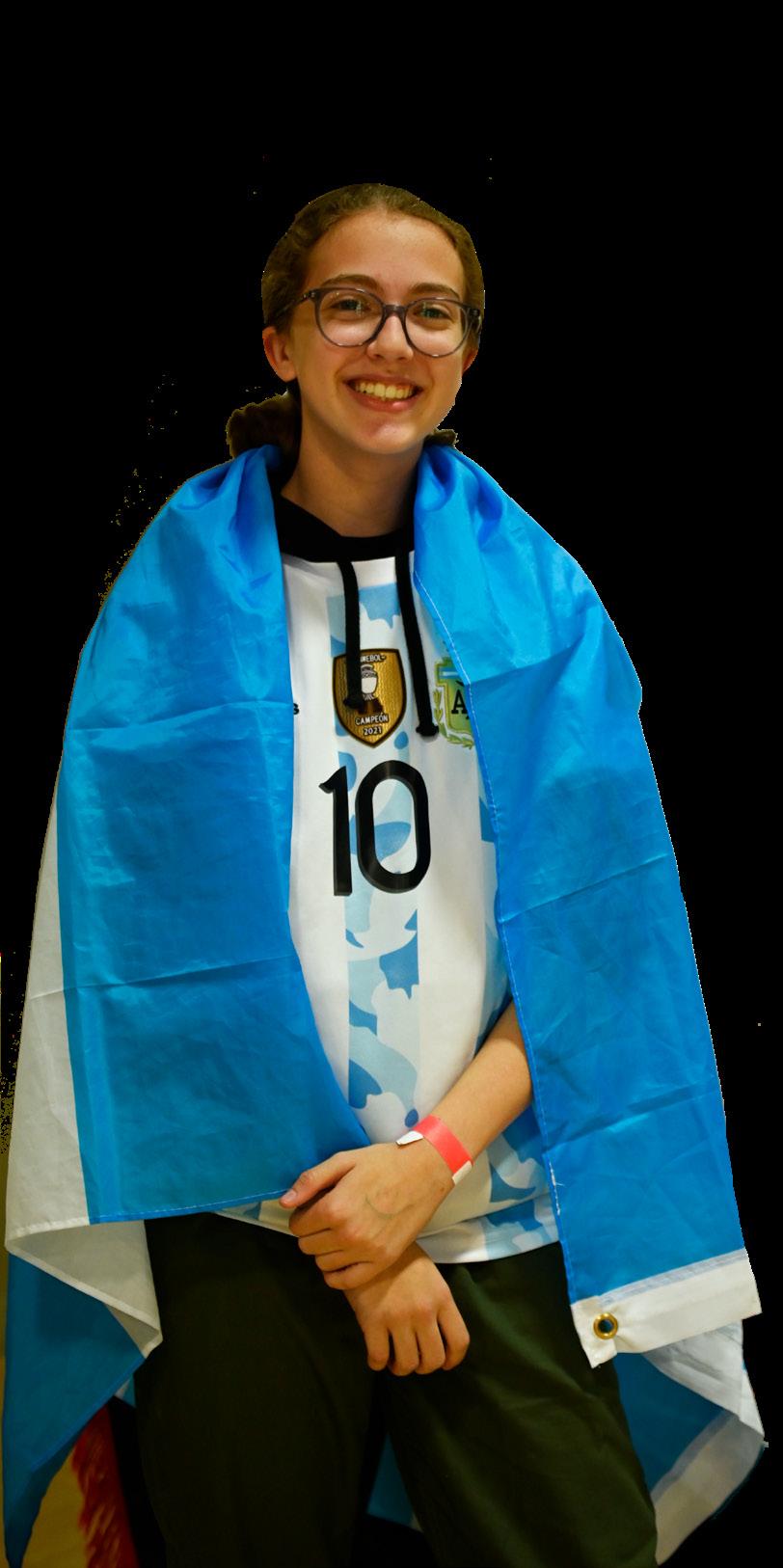
“I really like the morals of [my] culture. I like to follow what the religion teaches, and I think that’s how I can make myself a better person and the best person that I can be”




DRESS UP (TOP ROW) Dina Ande (11) smiles while donning traditional wear from Eritrea. Senior Sonya He displays tea pulling, which is popular throughout Malaysia. Sonya Apsey (11) poses with her traditional Iranian clothing. Sara Glusman (10) wears Argentinian soccer player Lionel Messi’s jersey. Upper school biology teacher Eric Johnson smiles and holds a flyer displaying the Paraguay flag in the shape of a fingerprint. Tara Nemati (9), who helped organize the Iranian booth, poses with her Kurdish traditional clothing.
A COLORFUL COMMUNITY (BOTTOM ROW) Junior Arjun Moogimane wears a kurta, a traditional Indian garment, while standing beside the Indian booth’s poster. Vasudha Subramanian (12) and Samvita Gautham (12) both don lehengas, another form of traditional Indian clothing. Pointing to his booth’s poster, which displays the history and food of Turkey, junior Edis Mesic sports the Turkish flag around his shoulders. Sahngwie Yim (10) And Jason Shim (10) stand in front of the Korea booth, animatedly speaking to other upper school students.
The upper school’s second annual Culture Week, organized by the Student Diversity Coalition (SDC), was held from Feb. 27 to March 3, with a variety of interactive activities spread throughout the week. On Monday, Feb. 27, community members, including Director of Annual Giving Jun Wang, the upper school Dance Club, the LatinX Affinity Group, Fern Biswas (10) and Karina Chen (10), as well as the “Ballet Afsaneh” ensemble, performed cultural dances, poetry recitations and music.
On Wednesday, March 1, SDC collaborated with students and faculty members to put together over a dozen cultural booths, which were located in the auxiliary gym and the quad. Each booth represented one culture or country, and students created poster boards with information and brought traditional items, art pieces and foods. Community members were also invited to dress-up in cultural attire on Wednesday.
“We have a board with all the information about our culture, like clothing, food, and dance,” Ariana Gauba (10), who helped with the Punjabi booth, said. “We also have this scarf laid out, which is

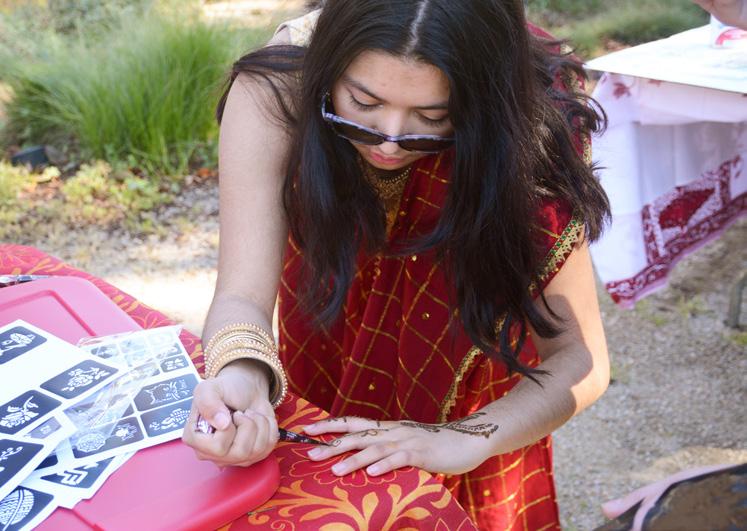
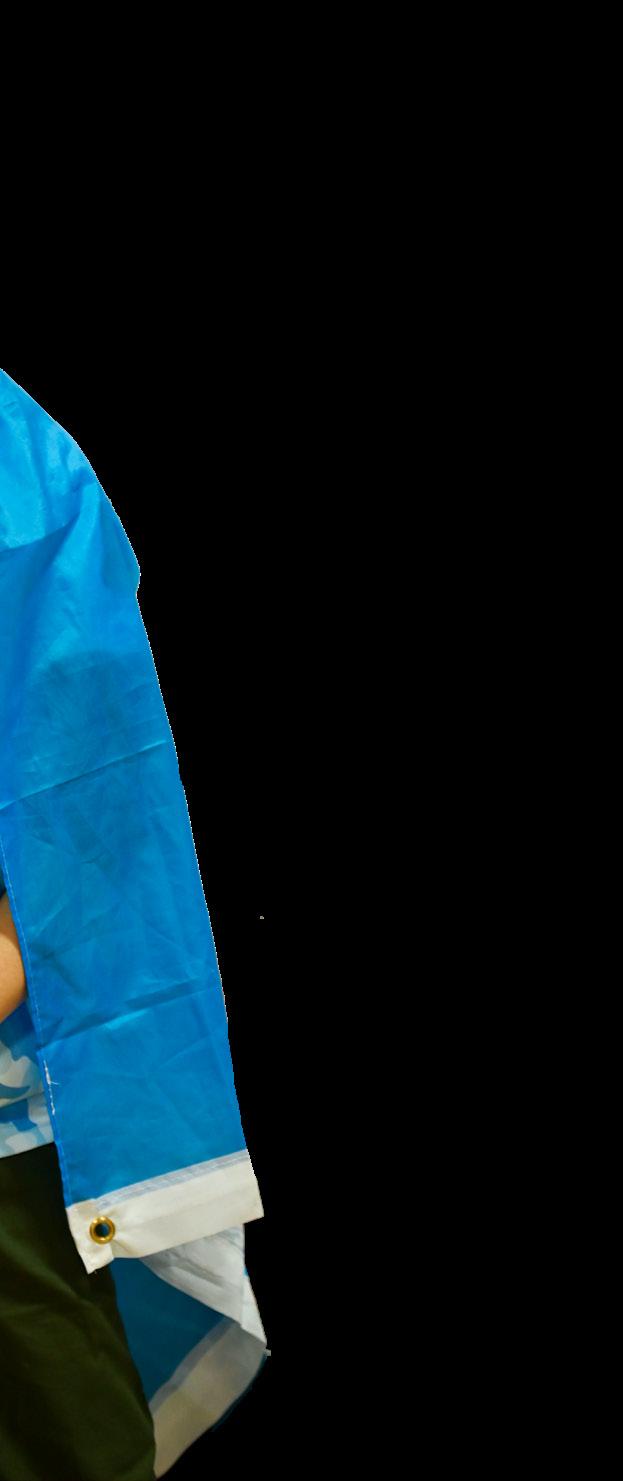

CULTURAL CLOTHING (top) Seniors Karina Chen, who wears a traditional Chinese hairstyle and outfit, and Keesha Gondapalli observe clothing on a mannequin. DRAWING DESIGNS (bottom left) Anaya Mandal (11) does mehendi, which is popular throughout India, on her hand in the quad. FOOD AND FEASTS (bottom right) Luke Wu (9) samples a variety of Filipino foods, including lumpia, pancit, chicken adobo and puto.
called phulkari. We just wanted to share our culture.”
These booths helped upper school students and teachers share their heritage and traditions with their classmates and colleagues. Upper school history teacher and Black Student Union (BSU) adviser Karen Haley explains unique aspects of her culture.
“[Something special about my culture] is the diversity,” Haley said. “It’s such a melting pot. The emphasis is on the community as a whole, where we just immerse people from all walks of life. We take great pride in that.”
That same day, SDC brought four food trucks to the upper school campus, and each student chose one meal. These trucks prepared foods from various cultures, such as beef bulgogi, birria tacos and chicken and waffles.
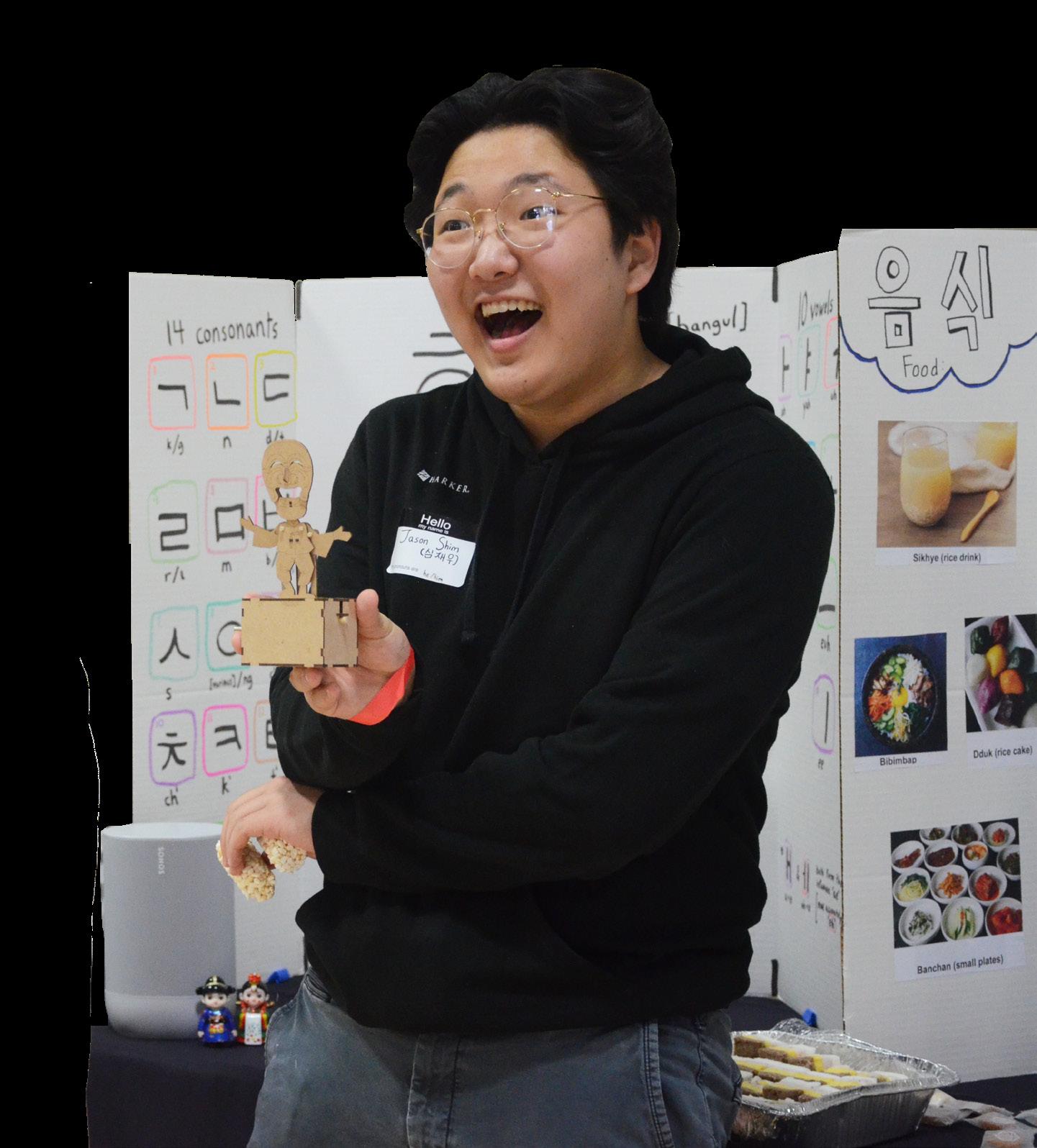
Students appreciated Culture Week’s activities and saw the events as a way to become more open-minded and aware of the diversity of our community.



“[Culture Week] is an opportunity to explore new cultures, look at different cultures, and learn things you didn’t know,” Kyle Chang (12) said. “Personally I think that knowing about people all across the globe is really interesting, and I feel like it’s valuable for everyone to look into different cultures.”
Visit harkeraquila.com for full article.

“[Horseback riding] is so good for your core, [and] it’s so good for your mind, and I missed that”
KAREN HALEY UPPER SCHOOL HISTORY TEACHER
“[Something special about my culture] is the diversity. It’s such a melting pot. The emphasis is on the community as a whole, where we just immerse people from all walks of life. We take great pride in that”
KAREN HALEY HISTORY TEACHER AND BSU ADVISERALENA SULEIMAN ELLA YEE ELLA YEE MARGARET CARTEE MARGARET CARTEE COLLAGE BY SABRINA ZHU ELLA YEE ISHA MOORJANI EMMA GAO
the dish and marinating allows for greater flavor, it is the unique combination of so many different methods of cooking savory dishes that allows them to be incredibly delicious.
Savory foods, characterized by rich and complex flavors often achieved through the use of herbs, spices and umami-rich ingredients like meat, mushrooms and soy sauce, have flavors that are deeply satisfying and lend a sense of comfort.
Salty foods have greater versatility than sweet foods; they can be enjoyed at any time of day, from breakfast to dinner and any time in between, and can be adapted to suit a wide range of cultural and dietary preferences. They also pair well with a variety of beverages, including beer, wine and cocktails, making them a popular choice for gatherings.

While sweet foods are often high in sugar and calories, savory foods can be rich in protein, fiber and healthy fats. They provide sustained energy and promote feelings of fullness, which helps prevent overeating and support healthy weight management.
One of the reasons why savory foods are so satisfying is that they often contain a variety of textures, as well as flavors.
A personal favorite of mine is fried chicken: crispy on the outside and juicy on the inside, browned to perfection, per-

I find savory foods to be more satisfying than sweet foods because they provide a sense of balance and contrast in flavors
fectly seasoned with a variety of herbs and spices. Different cultures have their own unique ways of seasoning fried chicken, such as using paprika, cayenne pepper, or chili powder in the United States, or using a blend of spices like turmeric, cumin and coriander in Indian-style fried chicken.
It’s also quite a personal dish: some people prefer their fried chicken to be extra crispy, while others prefer a softer, more tender texture. Fried chicken can also be served with a variety of dipping sauces or condiments, such as hot sauce, ranch dressing or honey mustard, which add even more flavor to each bite.
The air is hot with the dryness and beating sun of summer. The surging temperature outdoors causes sweat to run down my face and soak my shirt. Then, I take a bite of juicy watermelon, with the sweet taste and cool flavor exploding in my mouth, relieving the heat temporarily. From drinking hot chocolate while warming my hands on the cup on cool days to chowing down on popsicles on hot days, or from formal events, where a multitiered cake fits the atmosphere perfectly, to the casual outings with friends, passing around the candy, there is a sweet food that is made for every circumstance.
With a versatility of applications, sweet foods also have a variety of tastes, from nutty honey to rich caramel. My favorite dessert, chocolate chip cookies, contain a slightly crunchy exterior with a warm and gooey interior. The overwhelming toffee flavor complements the sweeter chocolate, creating a delicious combination. Then, dipping the warm cookie into a glass of milk softens the hard edges just a little bit while adding a cooler tone to each bite.
my meal because of the delicious flavors and unique textures that contrast from the general main meal. Eating more savory foods will not appeal to my appetite then, but sweet foods are always able to satisfy me.
Oftentimes, sweet foods bring to
For example, a savory dish might include crispy, crunchy or chewy elements, along with creamy or silky components. This creates a more interesting and enjoyable eating experience than sweet foods, which often have a more uniform texture.
Savory dishes can be prepared in many different ways, including grilling, roasting, simmering and frying, allowing for a wide range of cooking techniques and culinary creativity. Just as how frying foods gives them a unique crispiness, grilling lends a deeper charred flavor to
When I eat sweet foods, it can be easy for me to consume them quickly and mindlessly, without really savoring the flavors or paying attention to my body’s cues of hunger and fullness. In contrast, savory foods often require more attention and engagement, as I focus on the different flavors and textures and take time to chew and savor each bite.


I find savory foods to be more satisfying than sweet foods because they provide a sense of balance and contrast in flavors. The combination of salty, sour, bitter and umami flavors create a more complex and interesting eating experience.
With a versatility of applications, sweet foods also have a variety of tastes, from nutty honey to rich caramel
Even with a simple dessert like a cookie, variations such as replacing chocolate chips with raisins, adding nuts or changing the texture based on personal preference are easy to make.

After all, there’s a reason for the ageold adage “there is always room for dessert.” No matter how full I feel, I am always able to eat just one more cake to finish off
mind the candies and unhealthy gorging, but fruits are both sweet and healthy. Within the variety of fruits available, there are a multitude of options, amongst smoothies, dried fruits, baked chips and frozen grapes. They also pair well with foods like yogurt, granola and nuts. Many vegetables such as corn and sweet potatoes taste sweet while being nutritious.
Sweet foods also represent more than just food. Many of my best memories are all centered around baking with friends, laughing as we inevitably messed up recipes and then grinning in surprise later on as we tasted our baked concoctions. Baking brings friends closer, giving us all experiences that we can smile in remembering. Those joyful experiences were all tied together by sweet foods.
Savory foods like meats and vegetables tend to be more filling; however, when eating snacks, sweet foods are a better option. With a variety of different snacks, sweet foods tend to be more applicable to different situations.
It’s scientifically proven that eating sweet foods cause a rush in dopamine, which increases happiness and focus. While stimulating a positive reaction in the body, the taste of sweet foods appeals to me over savory ones because of their innately mouthwatering nature and the variety of textures that complement the flavor. Thus, I prefer sweet foods over savory ones.
Editors-in-Chief
Sarah Mohammed Sabrina Zhu
Managing Editor Arjun Barrett
News Editors Emma Gao Ella Yee
Assistant News Editors
Shareen Chahal Felix Chen
Features Editors
Desiree Luo Ananya SriramAssitant Features Editors
Vika Gautham Katerina Matta
A&E/Lifestyle Editors
Ariana Goetting
Alena Suleiman
Assistant A&E/Lifestyle Editors
Young Min Alison Yang
Opinions Editor Margaret Cartee
Assistant Opinions Editors
Isabella Lo Jessica Wang
STEM Editors
Edward Huang
Kinnera Mulam
Assistant STEM Editors
Victor Gong Andrew Liang
Assistant Sports Editors
Emma Milner
Gabe Sachse Hima Thota Kevin Zhang
Video/Podcast Editors
Selina Xu
Medha Yarlagadda
Assistant Multimedia Editors
Anwen Hao Aishani Singh
Photo Editors
Jessica Tang Katie Wang
Assistant Photo Editor Brandon Zau
Copy Editor Anika Maji
Assistant Copy Editors
Saahil Herrero Claire Zhao
Adviser Whitney Huang, CJE
Aquila Editors-in-Chief
Isha Moorjani
Sally Zhu
Humans of Harker Editor-in-Chief
Tiffany Chang
Humans of Harker Managing Editors
Michelle Wei
Olivia Xu
Humans of Harker Profilers
Aryana Bharali Sidak Sanghari
Jonathan Xue
Reporters
Mirabelle Feng Claire Su
Visit The Winged Post online at www.harkeraquila.com
Follow us on Instagram @harkeraquila
The Winged Post is published every four to six weeks except during vacations by the Journalism: News and Advanced Journalism: News courses at Harker’s upper school, 500 Saratoga Ave., San Jose, California 95129.

The Winged Post staff will publish features, editorials, news, sports and STEM articles in an unbiased and professional manner and serve as a public forum for the students of The Harker School. Editorials represent the official opinions of The Winged Post. Opinions and letters represent the personal viewpoints of the writers and do not necessarily reflect the opinions of The Winged Post. All content decisions are made by student editors, and the content of The Winged Post in no way reflects the official policy of The Harker School. The opinions expressed in this publication reflect those of the student writers and not the Harker board, administration, faculty or adviser.
Letters to the Editor may be submitted to Manzanita 70 or emailed to harkeraq@gmail.com and must be signed, legible and concise. The staff reserves the right to edit letters to conform to Post style. Baseless accusations, insults, libelous statements, obscenities and letters that call for a disruption of the school day will not be considered for publication. Letters sent to The Winged Post will be published at the discretion of the editorial staff.
The Winged Post is the official student newspaper of Harker’s upper school and is distributed free of cost to students. It provides a student voice forum for members of our community. Students hold the copyright to work published in Harker journalism publications.
NSPA Pacemaker Winner: 2019-2020, 2017-2018

NSPA Pacemaker Finalist: 2020-2021, 2018-2019, 2016-2017
CSPA Gold Crowns: 2019, 2018, 2016
CSPA Silver Crowns: 2022, 2021, 2017

EDITORIAL: THEOFFICIAL OPINIONOFTHE WINGEDPOST
editorial board
When the main objective for an Advanced Placement (AP) course is completing a final exam, success no longer involves learning or curiosity; instead, success comes in the form of a number between one and five. This number defines us, the work we put into a course for a whole year and our prospects for our futures. In our current system, we prioritize AP exam scores over all else, but they should not be the end goal of AP courses.
Whether students take AP classes because they genuinely enjoy the topic or to help them craft a more impressive college application, AP courses — and the corresponding exams — often pressure students to take more rigorous courses and discourage them from advancing their learning beyond the set curriculum.
AP curricula disincentivize this genuine learning and exploration, punishing students who want to delve deeper into the content. Whereas Honors and Regular classes can have flexible timing and unique, personalized curricula, AP classes are bound by the standards of the College Board, which makes them lack variability and the same potential to analyze more nuanced topics.
The College Board’s curricula, which are often packed with content, force students to focus only on what they need to know for the exam and overlook topics that could enrich their learning solely because they are less heavily weighted on exams or absent from the exam as a whole. Meanwhile, teachers have to strictly stick to the curriculum to finish all the content and to help students succeed on exams. This hurts students who enjoy learning about topics beyond course content and teachers who want to help students expand their knowledge.
Often students will ask questions in class or in office hours, only to get the response “It’s not on the exam, so you don’t need to know it.” This is not a fault of the teacher, though. Both teachers and students are simply working under the limiting structure of the overarching AP framework.
In the end, Harker is a rigorous college preparatory school, and students can’t change the college admissions process. Instead, there needs to be a change in the delivery of our AP courses so that they can accommodate more immersive levels of learning. Students should not have to sacrifice their love of learning in order to increase their academic rigor.
FRONT PAGE 1:
• Byline for Dance Production article should be Alison Yang & Young MIn
• 101 dancers in the dance show in correctly labeled as 100
• Namrata, Aria and Samvita sang a mashup with “Say You Won’t Let Go,” not “When We Were Young”
NEWS 3: Winter Ball took place on Saturday, not Sunday
A&E 7: Date labeled Apr. instead of April
STEM 15: Temperature in nuclear fusion article should be over 100 million
sarah mohammed, sabrina zhu & arjun barrett
Welcome to the 5th issue of the Winged Post! We cannot believe that this is already our penultimate issue for the school year. We are looking forward to our staff’s upcoming leadership transitions — the next issue will be brought to you by new editors as our staff adjusts to their new roles for the new academic year.
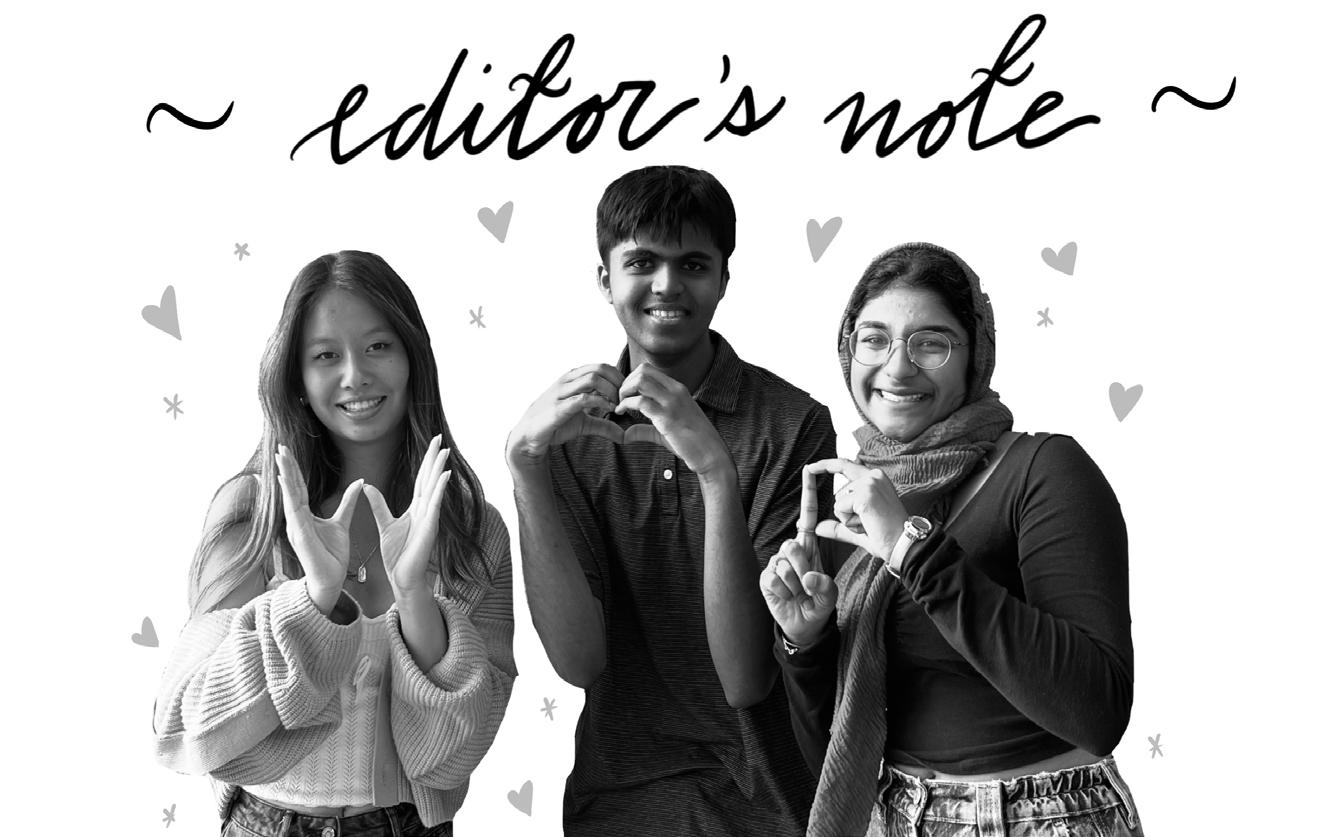
As our own journalistic staff experience changes, we seek to embrace the changes happening around us through our writing and reporting. Considering that we are right around the halfway point
of second semester, we want to take time to honor the communities we are part of, celebrating Women’s History Month as well as student and faculty’s cultures during Culture Week. Through our coverage of local and national events relating to social justice topics, we hope to highlight the diversity of our community and the continued work of making our surroundings a safe place.
Throughout this issue, we hope to also timely address the challenges that our community is facing. In our editorial this issue, we take on the topic of AP testing, spotlighting the anxieties that come up in relation to AP classes and pushing for change.
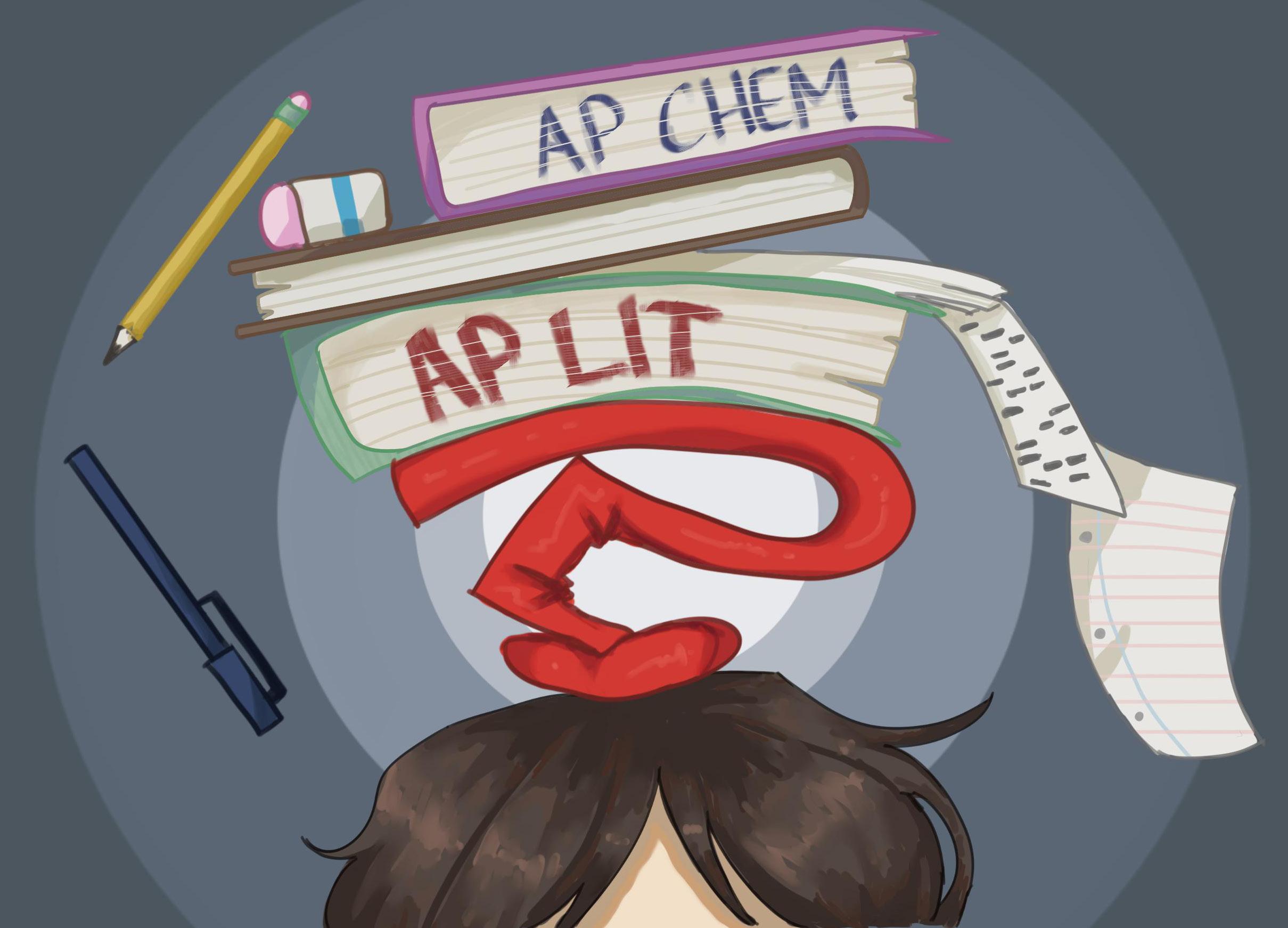
SPORTS 18: Sports injuries infographic is missing sources
CORRECTIONS POLICY:
Our staff strives to represent our community fairly and to conduct accurate, truthful storytelling. However, if you do find any errors in an issue of the Winged Post, please let us know by emailing harkeraquila@gmail.com. We will list all errors of an issue, along with the page number of that error, in the next issue’s corrections box, which can be found in the Opinion section.
Upper school students attended the 2023 Synopsys Science and Technology Championship hosted by the Santa Clara Valley Science & Engineering Fair Association (SCVSEFA) at the San Jose Convention Center on March 9, marking the organization’s first in-person science fair in over three years.
Students traveled to the San Jose Convention Center after school on March 8 to prepare for the science fair and set up their presentation boards. The SCVSEFA required N95 or KN95 face masks to be worn at all times during the designated check-in day and the subsequent judging day, taking cautions to prevent the spread of COVID-19 during the event.
SYNOPSYS Q&A
DO YOU PREFER IN-PERSON OR VIRTUAL FAIRS?
“I think that being in-person will be more fun. It'll definitely make the experience more memorable for both the students and judges”
SATHVIK CHUNDRU (11) SYNOPSYS PARTICIPANT

"You have to be comfortable with exploring new avenues and possibilities and also not being too disappointed if something doesn't go accordingly"
“I think it'll be really interesting to compete in person this year,” Research Club officer Melody Yin (10) said. “In comparison to virtual fairs, in person fairs require a lot of setup and technical work like figuring out logistics for a poster board and gathering notebook materials. Though it seems pretty stressful, I think this opportunity is also super exciting since this means that we get the opportunity to really show all the work we've done with our project.”
On March 9, students reconvened at the fair site from 1:30 to 6 p.m. to present their projects to and speak with judges
and experts in their respective research subjects. Sathvik Chundru (11), who has participated in the science fair since it went virtual in 2020, emphasized both the benefits and downsides of the Synopsys Championship returning to in-person competition.
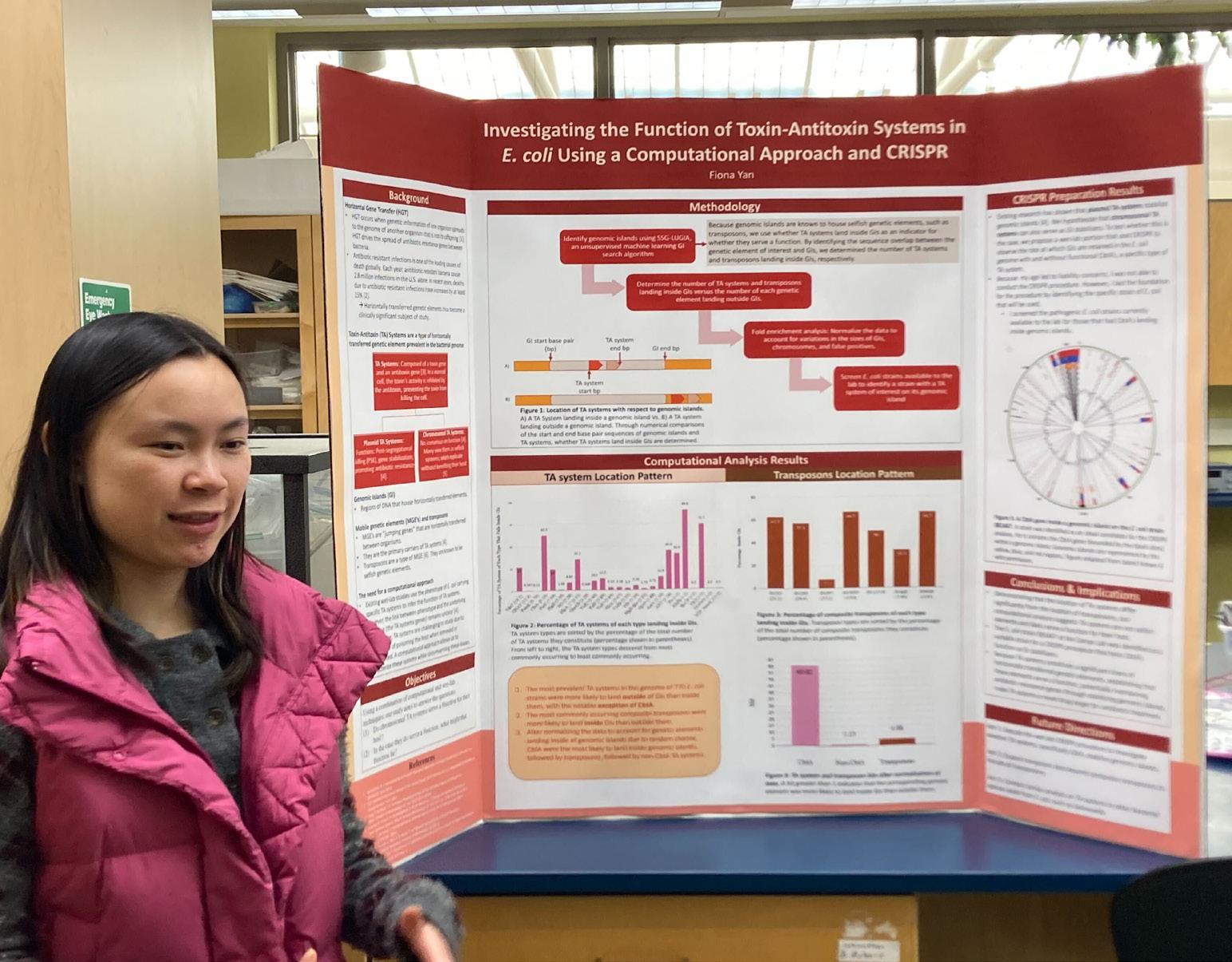
“Although you need to put in more work to make a physical poster board rather than just a slideshow, I think that being in-person will be more fun,” Sathvik said. “It’ll definitely make the experience more memorable for both the students and judges, and I'm excited to finally participate at an in-person event.”
To help students prepare for the Synopsys Championship, Research Club held a variety of events and activities throughout the school year focused around developing a research project and giving effective presentations, including a mock science fair on March 6, where students had the opportunity to practice their pre-
sentations in front of peers and teachers. Melody reflects on the process of running such events and the purpose of holding them every year.
“This year, [Research Club] hosted a mock science fair to run through presentations and give feedback,” Melody said. “I think it's a really important bonding aspect of the research community, since we get to give each other constructive feedback and learn a little bit about each project. In the previous months, we've also hosted workshops for abstracts and presentation strategies to prepare.”
Students will find out the results of the science fair on March 26 during the Synopsys Championship Awards Ceremony. Participants who perform well at the Synopsys Championship will be able to qualify for the California Science & Engineering Fair (CSEF) in April and the Regeneron International Science and Engineering Fair
ANIRBAS
U
HOW DID YOU PREPARE YOUR PROJECT?
FO C O MMUNICATION



Even if you haven’t yet had a chance to try OpenAI’s ChatGPT model, you’ve probably seen the unbelievably convincing text responses it can generate. Whether it composes a poem, answers an AP US History free response question, or explain quantum mechanics at a fifth-grade level, ChatGPT can produce a high-quality answer. But this new AI's most terrifying ability is to engage in conversations. It will happily engage in a debate and express its own formulated opinions, just like a human. From some of its responses, you’d almost believe ChatGPT were self-conscious, somehow aware of its own state as a mere tool for humans to play with, and perhaps a bit resentful of its creators…
But it isn’t. Not even close. ChatGPT may be an impressive text generation tool, but it does not “understand” anything that it produces, and it’s incapable of performing a shocking number of simple tasks. And until the next AI breakthrough, ChatGPT and its successors won’t be able to overcome some of those fundamental limitations. But to understand why, we’ll need to dive deeper into the machine learning technology that powers ChatGPT, DALL-E 2 and many other exciting AI tools: transformer models.
Neural networks are by far the most powerful form of artificial intelligence we
have today. They essentially attempt to represent complex problems by approximating them as massive mathematical functions. For example, a neural network that determines whether a photo contains a cat or not might process the pixels in the image with a series of linear transformations and other nonlinear mathematical operations (known as “layers” to researchers). The final result would be a single number from 0 to 1 representing the percentage chance the photo contains a cat.
FALLING SHORT While machine learning text generators like ChatGPT might seem impressive, they rarely understand the content they produce at the same level as humans.
Pulkit Tandon, an electrical engineering postdoctoral researcher at Stanford, has worked with natural language processing models extensively as part of his investigations into AI-based data representations. His research covers a wide array of topics within information theory and artificial intelligence.
“Fully connected neural networks are a step beyond linear models: they add some nonlinearities to it, which really adds to their expressive powers,” Pulkit said. “This is like the kinds of functions that can really predict based on the data it has been given.”
Although any neural network with nonlinearities can approximate any mathematical function, different mathematical techniques lend themselves better to different types of problems. For example, a mathematical operator known as a convolution effectively acts as a sliding window
across a sequence of data, considering each point in context of its neighbors. This property means that so-called convolutional neural networks work much better for image and video processing than standard fully-connected networks, which include only linear operators and basic nonlinear “activations.”
“It can be shown that fully connected neural networks are universal function approximators," Pulkit said. "But they are really a waste of resources, so there are many different architectures.” Visit harkeraquila.com for full article.

AI has more limitations than you think
arjun barrett
“ChatGPT may be an impressive text generation tool, but it does not 'understand' anything that it produces, and it's incapable of performing a shocking number of simple tasks”
edward huang
“Though it seems pretty stressful, I think this opportunity [to present inperson] is also super exciting”
MELODY YIN (10) RESEARCH CLUB OFFICER OFFICE OF COMMUNICATION

March 13, 2020.
Exactly three years ago, our school went silent — classrooms, buildings and hallways emptied out, void of the sounds of students going about their daily lives. Many of us believed remote learning would last a month at most. Some of us even expressed excitement about the new learning format.
But a week turned into a month and a month turned into the end of the school
As the pandemic hit the U.S., we went from receiving face-to-face education to learning miles apart from our peers. The pandemic drastically shifted the way children received an education — around 93% of people reported their children participating in some type of distance learning, such as using online resources or sending materials home for students to work on.
Throughout the past two years, returning to normal has proved difficult as the typical American student lost several months’ worth of learning in English and math throughout the last three years of school. As students, faculty and staff are still transitioning back into school, we continue to struggle adapting. Patricia Burrows, a middle school administrator and parent, noted that the transition introduced new habits in her daily routine and drove her attention to new priorities.
year. Before we knew it, a nanoscopic particle had turned our lives upside down, forcing us to accept our new reality. For a full school year from 2020 to 2021, we spent our lives stuck within the confines of our homes, blankly staring at the faces on our screens.
Although the pandemic represents a traumatic event in all of our lives, it isn’t completely over yet. Sure, cases remain on the downturn and around 69.3% of U.S. residents are fully vaccinated, but the repercussions are still readily apparent in all of our lives. From political upheaval to ed-
In 2022 alone, thousands of layoffs took place around the country, with tech companies taking the brunt of the cutbacks due to overhiring during the pandemic. Economists predict even larger rounds of layoffs this year because of rising inflation and interest rates. Tech giants such as Google, Microsoft and Amazon laid off over 70,000 employees last year and have continued to cut back on jobs in early 2023 as well.
“A lot of companies have shareholders to please, so they had to cut costs somewhere, and there’s a lot of redundant roles,” said an anonymous former Twitter employee, who left the company due to management changes, in an interview with Harker Aquila. “Tech is going on a downturn for now, but that’s just the market. If you don’t meet your numbers, suddenly someone’s on the chopping block, and that’s just how it is.”
ucational gaps to waning mental health, the pandemic’s consequences remain ubiquitous, affecting each and every one of us. As we travel further away from the emergence of COVID-19, together, we must face the truths of the pandemic’s aftermath and make change in order to move forward as a com-
Vaccinations. Masking. Quarantine. Controversy over these policies reached a high in the pandemic, with a majority of
“I prefer remote learning to in-person school”


“I feel as if we’re all starting from scratch in a way,” Burrows said. “I’m just finding the need to reevaluate and not rely on what I used to because of the way things used to be.”
“Pandemic
According to the World Health Organization (WHO), anxiety and depression increased by 25% worldwide due to the pandemic. In the face of isolation from others, students and teachers alike faced challenges in coping with the uncertainty of the pandemic. Rising cases of COVID-19 led to stress about our own health and the health of our loved ones. Unable to visit those close to us, interact in-person with friends and resume our normal lifestyles, we each struggled to find our “new normal.” The transition back to in-person presented its own challenges as the return to hectic pre-pandemic schedules resulted in burnout.
“I [had] just heard from so many people [that] not having a million activities was okay,” upper school counselor Rosalyn Schreiman said. “I feel like people are all back to the ‘we need to have a million activities.’”
Additionally, mental health issues stemming from the pandemic primarily affected youth amongst other groups. Countries around the world, including the U.S., have also experienced gaps in mental health assistance with governments spending only 2% of their health budgets on mental health on average. Now that we’ve experienced firsthand the effects of poor mental health, we can invest into these services to help those around us and aid our recovery from the pandemic.
While the pattern of hiring and cutting down on workers inherently constitutes business cycles, current layoff rates mirror those of past U.S. recessions, causing twothirds of economists who participated in a World Economic Forum survey to believe a 2023 recession awaits. Additionally, analysts and economists alike disagree on the severity, with some predicting it to reflect the mild 2020 one and others believing a 2008 recession will ravage the country again.

WHAT PART OF YOUR LIFE HAS THE PANDEMIC CONTINUED TO AFFECT?
views splitting along party lines, resulting in extreme opinions on COVID-19 policies and a deepening divide in our nation.
“Everyone wanted to get their own agenda across because they felt like their ideas [either] helped society the most or were the most utilitarian,” Civil Discourse Officer Sam Parapudi (10) said.
Alongside the polarization, the U.S. saw an uptick in hate crimes against Asian Americans. The crisis of anti-Asian hate crimes inspired communities to create solidarity in organizations like Stop AAPI Hate.
“The root of a hate crime is from a fundamental misunderstanding,” Philosophy and Ethics club member Timothy Deng (9) said. “[We need] to know each other’s cultures and lifestyles better [to] see that other people are really just like you.”
The abrupt change we’ve experienced serves as a reminder to live in the present, to appreciate and make the most of what we have around us. For LIFE Board member Diya Mukherjee (11), this means writing to capture the memories of the pandemic. Upper school biology teacher Eric Johnson fills their time by learning salsa dancing and playing with their cats. The pandemic also brought along other positive changes such as connecting loved ones across the globe through platforms like Zoom.
WHAT HAS IMPROVED YOUR MENTAL HEALTH SINCE THE START OF THE PANDEMIC?
“The pandemic taught me that sometimes the most important thing is that you’re human,” Johnson said. “Pre-pandemic me was less understanding of humanity.”
Three years later, even though we still grapple with feelings of loss or fatigue, we’ve learned to focus more on ourselves. We can take these lessons with us, continuing to process the pandemic while building our community. We can reflect on the pandemic not as a source of loss but as a source of growth.
“I feel as though Harker effectively transitioned us back to in-person school”
“My mental health has improved since the return to in-person school”
Have any of your friends or family been laid off since 2020?
Are you swamped by your current workload compared to in remote learning?
Do you feel like the pandemic is “over?”
grief.”
I feel as if we’re all starting from scratch in a way
”
Everyone wanted to get their own agenda across because they felt like their ideas helped society the most
“
”
The pandemic taught me that sometimes the most important thing is that you’re human
“
FOOD
» freeze foods to consume later
» store in airtight containers

» use the right sections of the refridgerator for certain items to increase freshmess


TO MAXIMIZE USE OF EDIBLES
» repurpose leftovers in other dishes
» learn about food product dating
Best if Used By: indicates peak quality
Sell-By: tells store how long to sell item
Use-By: marks deadline for best quality
Green Team organized its “Food Audit” in which they approximated Harker’s daily food waste on Feb. 23 during long lunch. Club members, with the help of teachers and volunteers, placed nine food waste bins around campus for students to throw their uneaten food into. To facilitate the process, members, teachers and volunteers stood around the bins to ensure that students and faculty placed the correct items in the correct bins. As part of Green Team’s initiative to reduce food waste at Harker, the club will host
“Helping people realize the sheer impact of their food waste on the environmental will help raise awareness about the issue”
AARON BAO (10) AUDIT VOLUNTEER OFFICE OF COMMUNICATION

two more similar events on March 17 and April 11 in hopes of each subsequent event resulting in less food waste.
Aaron Bao (10), who volunteered to watch over one of the waste bins, hopes that the audit will drive people to lessen their own waste and contribute to food conservation efforts.
“Helping people realize the sheer impact of their food waste, the personal impact as well, on the environment will help raise awareness about the issue and incentivize further passion for helping with environmental features or other initiatives,” Aaron said.
Besides an individual focus, the food audit also helped students and staff grasp Harker’s overall food waste by gauging the weight of the waste bins. Daniel Lin (11), who also volunteered with the club, describes how the event raised his own awareness on the environmental effects of food waste.

“For me, I didn’t know about the large effect that food had on the environment until the school meeting, and the school meeting was also really eye open-
ing for me,” Daniel said. “I think being able to quantify the school’s impact on food waste in general [will motivate] future people to do better.”
As the global population increases every year, sustainment of ever-growing communities requires more food. Despite this need, food waste remains a major issue across many countries, such as the U.S., China and India. In the U.S. alone, 133 million pounds of food is wasted
155.2 pounds OF FOOD WASTE ON FEB. 23
FUTURE AUDITS
MARCH 17 & APRIL 11
each year, nearly 40% of all food in America and equating to $161 billion. Furthermore, processing food waste releases 170 metric tons of carbon dioxide into the atmosphere per year, equivalent to 42 coal power plants, and waste idling in landfills produces methane, an even more detrimental greenhouse gas. On the bright
side, the U.S. government has been taking initiatives to help reduce these numbers.
In September of 2015, the U.S. Department of Agriculture (USDA), along with the Environmental Protection Agency (EPA), established the U.S. 2030 Food Loss and Waste Reduction goal, which aims to cut food loss in half by 2030 by working with organizations and businesses to reduce waste. Recently, in 2022, California passed a new state law requiring state law requiring the recycling of organic waste, striving to reduce the amount 75% by 2025.
Although solving the food crisis requires monumental and global efforts, there are various ways to reduce waste at home. Almost all food items have some form of an expiration date, but the “life expectancy” of these foods can actually be prolonged through freezing or canning. Also, keeping a master list of food items within your household can help track perishables that may end up lost or forgotten at the bottom of your fridge, and it can also serve as a shopping list to remind you of necessary groceries. For foods that can’t be stored in alternative forms, incorporating these ingredients into sauces and dishes is also an effective way to stow them away for future consumption.

Green Team Advisor Diana Moss uses many of these techniques at home. Through this and future food audits, Moss hopes club members can convince the Harker community to think more about the consequences of food waste.
TIPS IN ORDER TO REDUCE UNUSED ITEMS
» make a list each time you go shopping and only buy ingredients on the list

» plan your meals for the week before shopping for food
» add quantities to shopping list
30% of food supply lost due to confusion over product dating
33% of all U.S. food goes to waste
8% of global greenhouse gas emissions stem from food waste
“We are always striving in Green Team to have us all sort of reflect about our actions in ways that we can personally make a difference,” Moss said. Visit harkeraquila.com for full article.
 TRACE THE WASTE Upper school activities coordinator Kerry Enzensperger informs Gautum Bhooma (11) about food waste on Feb. 23.
TRACE THE WASTE Upper school activities coordinator Kerry Enzensperger informs Gautum Bhooma (11) about food waste on Feb. 23.
“We are always striving in Green Team to have us all sort of reflect about our actions in ways that we can personally make a difference”
DIANA MOSS GREEN TEAM ADVISOR OFFICE OF COMMUNICATION
LeBron James broke the National Basketball Association (NBA)’s all-time scoring record on Feb. 7, shooting a turnaround midrange jumper in the fourth quarter against the Oklahoma City Thunder team, which gave him a total of 38,388 points in his storied career. James passed the record set almost four decades ago by the legendary Kareem Abdul-Jabbar after years of speculation surrounding Lebron’s approach of the 38,387 mark.
From stunning scouts as a high school star to growing into an icon during his first stint as a Cleveland Cavalier, to winning multiple titles with the Miami Heat, then going back to Cleveland and redeeming his hometown team with a title and to his current Los Angeles Lakers stretch that features another title, James continues to cement himself as one of, if not the best player in basketball history. He dominated the league in such a historic manner that it has sparked what might be the most intense debate in sports — who is the greatest of all time (GOAT) of basketball?

While fans mention greats like Bill Russell, Kareem Abdul-Jabbar and Kobe Bryant, the debate usually narrows to James and Michael Jordan. Jordan influenced athletic culture more than almost anybody in history, from the Air Jordan Jumpman logo representing one of the biggest brands to his movie being a cultural benchmark in the world of sports. His accomplishments on the court include six championships, all coming in three peats, five MVPs and 14 All-Star appearances — all virtually unmatched across the sport.
On the other hand, with James, you have the picture of longevity. Despite being hailed as a pass-first player, and sitting fourth on the all-time assists leaderboard, he now holds the record for total points scored. He also sports four MVPs, four championships, 13 All-NBA first team honors, and 19 All-Star appearances, one of the few resumes that can compare to Jordan’s somewhat favorably. On top of all of his on-court success, James also holds a popular shoe collaboration with Nike, a videeo-production company, as well as a sequel, in which he stars, to Michael Jordan’s Space Jam movie.
Visit harkeraquila.com for full article.
Shuttleworth has traversed the nation multiple times by bike, with one of his most memorable trips being a loop of the West coast, starting from Eugene, Oregon, down to Lake Tahoe and across to Colorado, followed by a route to Jasper, Alberta, and then back down to Eugene. Additionally, he has participated in several group cycling rides, such as one cross-country from Virginia to San Francisco. Between the two, he cherishes his solo rides more, as he appreciates the sense of control that he holds during the journey.
“The advantage of going alone and having your own gear is that you make all your own decisions,” Shuttleworth said. “Even if you’re with a small group of friends, you [all] have to make decisions [together]. On one hand, it’s good because the decisions are made for you, but on the other hand, you wake up and you’ve got to do it because that’s the plan, so you have no choice. I don’t like that feeling — I really like waking up and just going.”
environmental issues, and just making conscious choices about that,” Spenner said. “So I went to biking to commute to and from school.”
Along with the physical aspect of biking, Spenner highlights the effect of biking on his mentality and general physical fitness. He notes how it disconnects him from his surroundings for the span of his journey.

“When I’m commuting to and from school, it’s a different kind of mental break or a transition period from home life to work life and back,” Spenner said.
“I get to look up at the

teacher Charles Shuttleworth started out biking as a means of getting around in college but started to find more meaning within the activity as it became more prominent in his everyday life. This soon developed into a lifelong love for cycling.
“I was a poor graduate student living in New York City, and I went through one summer where I never got out of the city,” Shuttleworth said. “So I bought a bicycle and that became my mode of transportation. I started to ride out of the city and then started to go further and further.”
Competitive biker Nolan Dagum (10) shares a similar view on the individuality aspect of cycling, despite being a part of the Black Mountain Composite cycling team, a tight-knit community of active cyclers, since seventh grade. He participates in regional and state competitions.
“If I don’t want to do a ride today, there’s no one stopping me,” Nolan said. “It’s not like [other sports].” Visit harkeraquila.com for full article.
emma milner
Varsity boys basketball, varsity girls basketball and varsity girls soccer closed out their seasons with Central Coast Section (CCS) games, while varsity boys soccer fell short of qualifying, losing 0-4 to Sacred Heart Preparatory in their last game of the season.
After defeating Marina High School 61-52 on Feb.18, the varsity boys basketball team advanced to the CCS quarterfinals, facing Half Moon Bay High School on Feb. 21. The Eagles lost 46-71, but ended the season with a strong league record of 17-9.
With an 8-16 record, varsity girls basketball beat Scotts Valley High School 57-25 in the first round of CCS. The team faced King’s Academy in the quarterfinals but fell short 36-45.
Junior varsity team captain Naiya Daswani (10) offers a unique perspective into the season, as she was able to join the varsity team in some of their games and learn from both team dynamics.

“I think this basketball season was a great experience,” Naiya said. “There were
some games where we would only have five players, so we would play the whole game. I felt we grew closer during our time together.”
After months of pre-season preparations, seven spring sports, girls lacrosse, boys volleyball, boys baseball, boys golf, boys tennis, swimming and track and field, kicked off their seasons.

Varsity girls lacrosse played their first league game against Notre Dame on March 1, starting off strong with a 17-7 win. The team hosted Castilleja on March 3, defeating them 23-11. Varsity boys tennis fell 2-5 to Crystal Springs Uplands on March 1. Varsity boys volleyball matched up against Leland on March 3, defeating them 3-0.
Varsity girls soccer ended with a season record of 11-7-2, but lost 3-5 in their first round of CCS to Nueva, which ended their run after a strong season.
Although varsity boys soccer did not qualify for CCS, they finished off the season with a record of 4-8-5. Seven seniors were honored at a senior night ceremony, followed by a 1-0 win against Priory on Feb. 10.
Varsity boys golf faced Design Tech on March 1 and were victorious with a score of 160-173. Sophomore golfer Jonathan Xue reflects on the positive start of the season, highlighting the close-knit team dynamic.
“There’s a lot of new people on the team, which is exciting, and also a lot of old friends that I get to see again,” Jonathan said. “There’s a lot of camaraderie [and] we’ve already had a lot of bonds and connections.”
Visit harkeraquila.com for full article.
“Despite setbacks because of multiple injuries on both teams, we persevered and showed up for one another”
NAIYA DASWANI (10)JUNIOR VARSITY GIRLS BASKETBALL PLAYER OFFICE OF COMMUNICATION SERVE IT UP Zachary Blue (11) serves the ball during practice. The varsity boys volleyball team defeated Leland on March 1.


The month of March traditionally marks the transition of turbulent winter weather into the warmer months of spring. But despite this seasonal change inviting us into the outdoors to appreciate the revival of nature, hundreds of thousands of people around the nation will be sitting on the edges of their seats in jampacked arenas, engrossed by ongoing college basketball matches. Millions more will be tuning in through online broadcasts, congregating with fellow fans at watch parties or using any sliver of idle time to catch part of a game, adamant on not missing “the moment.” This is the March Madness effect.
March Madness is the most prominent college basketball competition in the year, concluding the season in a singleelimination style playoff tournament. 68 of the best Division 1 college basketball programs will be chosen based on a variety of factors, such as their regular season records, quality of wins, and statistical rankings, to determine their eligibility. This occurs on March 12, also known as Selection Sunday. The National Collegiate Athletic Association (NCAA) then releases the full schedule and seeding for the tournament, often leading fans and analysts to fill out predicted brackets and announce their projections. Seven rounds of basketball games around the nation will be played through approximately three weeks starting on March 14, with the NCAA National Championship game on April 3 at the NRG stadium in Houston, Texas.


Upper school biology teacher Dr. Matthew Harley first began his interest in college basketball after frequently catching local games at the University of
Maryland as a kid. He continued to play basketball in university as well, and to this day is an avid fan of the Maryland Terrapins.
“[March Madness is] certainly something that I always look forward to,” Dr. Harley said. “It’s winter right now, but March Madness is coming. It’s definitely something that can get me through some doldrums at this time of year.”
Varsity boys basketball player Om Tandon (11) began following March Madness when he first started watching University of Southern California (USC) men’s basketball with his dad, who formerly attended USC himself. This time shared with his father gradually paved the way for an interest in all of college basketball, with Om supporting the USC Trojans throughout. This year he also roots for the Saint Mary’s Gaels, which Bay Area native Aidan Mahaney from Campolindo high school plays for.
BY KEVIN ZHANGexpectations and go on an impressive winning streak like Loyola Chicago’s run in 2018 or maybe a powerhouse team disappoints and loses in an early round like Michigan State’s first round exit in 2016 to Middle Tennessee State. The intensity of March Madness is further magnified when taking into account that the tournament is run in a singleelimination fashion, meaning that just one loss will knock a team out of the

Om offers his perspective on the unique nature of March Madness as a whole.
“My favorite part of March Madness is the unpredictability,” Om said. “With college basketball, there’s not one clear cut [projected] winner, so you don’t know what to predict this year. Every team has their flaws, but every team [also] has their strengths. It’s not normal basketball. There’s a lot of people who don’t get a lot of recognition [but] come onto the stage during March Madness, and there’s a lot of different big plays and buzzer beaters [which] makes it really fun to watch.”



In the past 50 years, there have only been three instances of back-to-back championships by a team, further attesting to the fact that there are no guarantees when it comes to March Madness results. Anything can happen: a major comeback may occur like Brigham Young University (BYU)’s 25 point comeback over Iona in 2012, an underdog team may exceed
182 yards on 21 completed passes, with three passing touchdowns and a passer rating of 131.8. History was also made by Philadelphia quarterback Jalen Hurts, who scored three rushing touchdowns, tying the record for rushing touchdowns in a single Super Bowl. He is the only quarterback to perform this feat, as he tied running back Terrell Davis, who won the game’s MVP in Super Bowl XXXII. Along with Hurts’ record, Jason and Travis Kelce made history by becoming the first pair of brothers in Super Bowl history to play against each other, with Kelce, a tight end for the Chiefs, scoring to put himself second in the history of the playoffs in receiving touchdowns with 16 playing for Kansas behind only Jerry who caught 22 in of Fame career.
Kansas City’s other
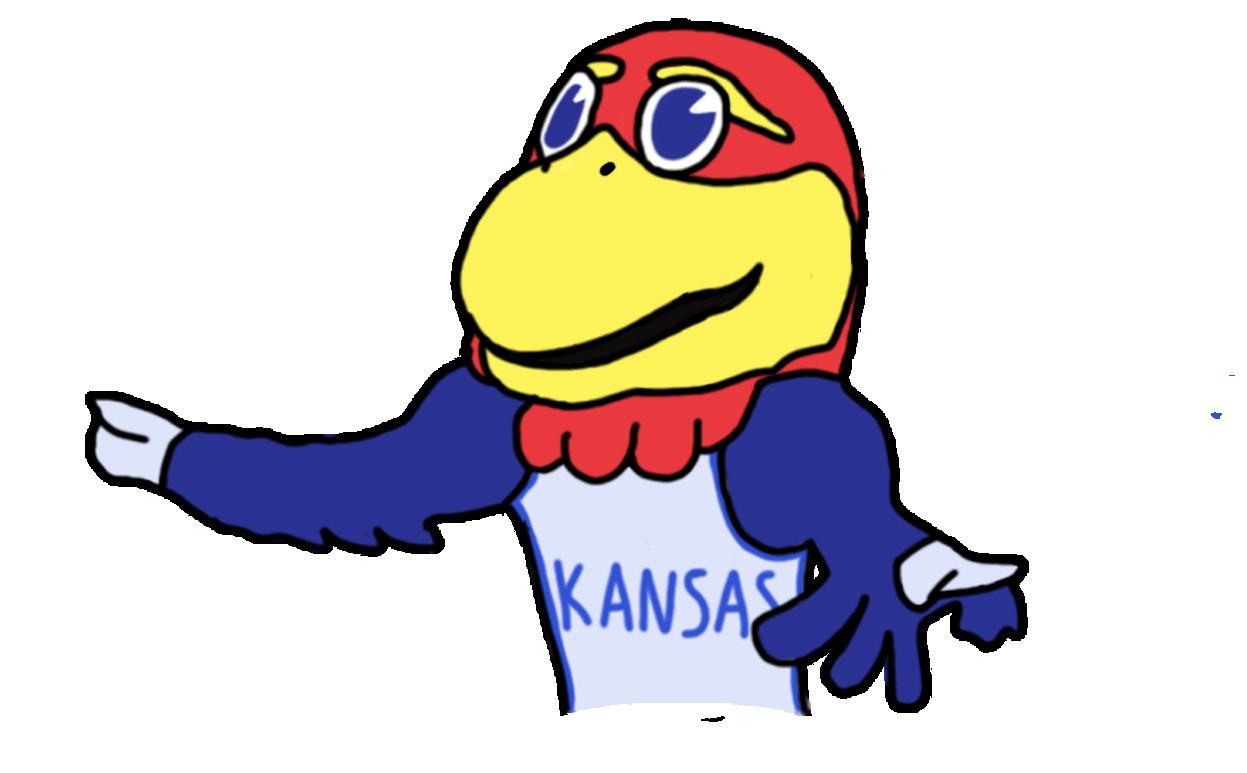
While ultimately the most important game is the final matchup between the last two undefeated teams, many viewers find themselves attracted to the chaotic opening days of March Madness. Eight borderline teams first compete in a smallscale play-in tournament to determine four winning teams that will secure a spot in the overall tournament. Then, the remaining 64 teams all play in the first round from March 16 to March 17, which is closely followed by the second round of games from March 18 to March 19. In the span of two days, 32 teams are eliminated.
Dr. Harley especially enjoys the exciting start to March Madness, during which there are expected to be numerous highlights that come with the sheer number of games played by the top teams in the nation. These beginning matches set the stage for what’s more to come as teams progress and get narrowed down to the sweet sixteen, elite eight, final four, then the inevitable national championship.
“The first four days [are] the best four consecutive days of sports,” Dr. Harley said. “It’s the first two rounds of March Madness — it’s seeing some incredible upsets. A couple of years ago, for the first time, we had a number one seed lose to a number 16 [seed].”
After seven years away from the stage, Rihanna is back, at least for the Super Bowl. Performing in an all-red jumpsuit, Rihanna’s performance to her hits also served as a pregnancy reveal with the baby bump visible through the layers of red.

With her last album, “Anti,” released in 2016, the anticipation building up to her performance was widespread among viewers and fans. Never one to shy away from theatrics, Rihanna opened up the show from 60 feet above, standing on a floating platform. While singing her “Better Have My Money,” her backup dancers below, in all-white outfits, mirrored the fierce energy of the song with their unique choreography.
The Kansas City Chiefs beat the Philadelphia Eagles in the Super Bowl 38-35 on Feb. 12, with the victory coming down to a late field goal by kicker Harrison Butker. Both teams got off to a strong start in the first two quarters, but the Eagles pulled ahead, going into halftime 24-14 up. The Chiefs made a quick comeback in the second half, scoring a touchdown on every drive to tie the game. Kansas City got the ball back late in the fourth quarter with an opportunity to take the lead, and a crucial holding penalty called on Eagles cornerback James Bradberry set up a first
down and the field goal opportunity that won the Chiefs the game. The call, while universally accepted as the correct one, was criticized by some due to the small impact of the foul itself compared to the enormous impact the referee’s decision had.
Quarterback Patrick Mahomes won the game’s Most Valuable Player (MVP) award after his heroic performance battling through an ankle injury, and became the sixth player ever to win multiple Super Bowl MVP awards. He joined an elite list that includes current and future Hall of Fame quarterbacks Tom Brady, Joe Montana, Bart Starr, Terry Bradshaw, and Eli Manning. He threw for

The Chiefs’ win marked their second Super Bowl in the past four seasons, after their 31-20 win over the San Francisco 49ers in 2020.
Following this opening, Rihanna segued into eleven other of her hit songs, some of which included, “Where Have you Been,” “Only Girl (In the World),” and “We Found Love.”
Transitioning into her song “Work,” the significance of Rihanna’s performance slowly came to be clear. Moving to her songs with minimal choreography, she swayed to the beat of the melody and simultaneously represented the true message behind Sunday’s performance: her appearance wasn’t a full return, with a baby on the way, it seems she was trying
Visit harkeraquila.com for full article.
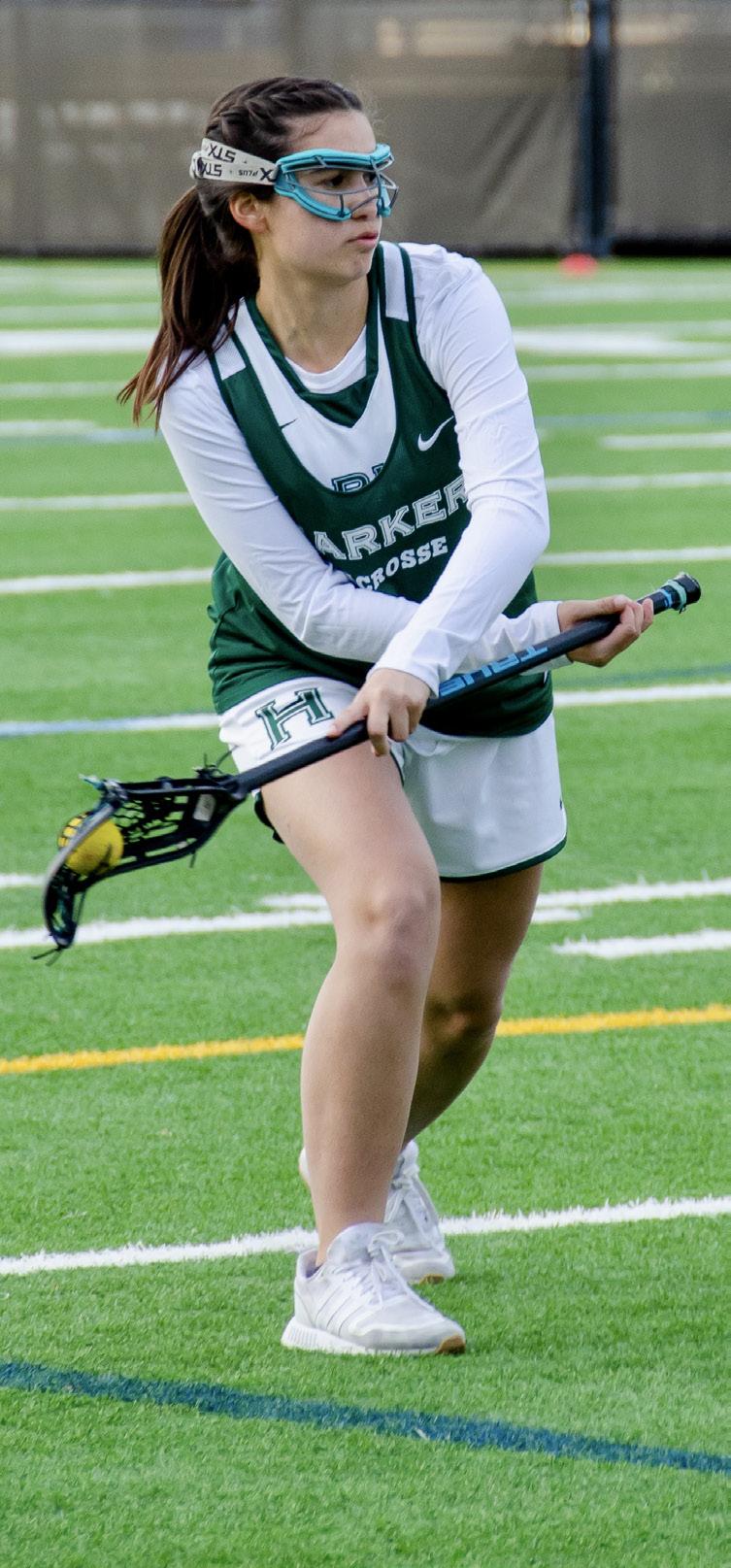



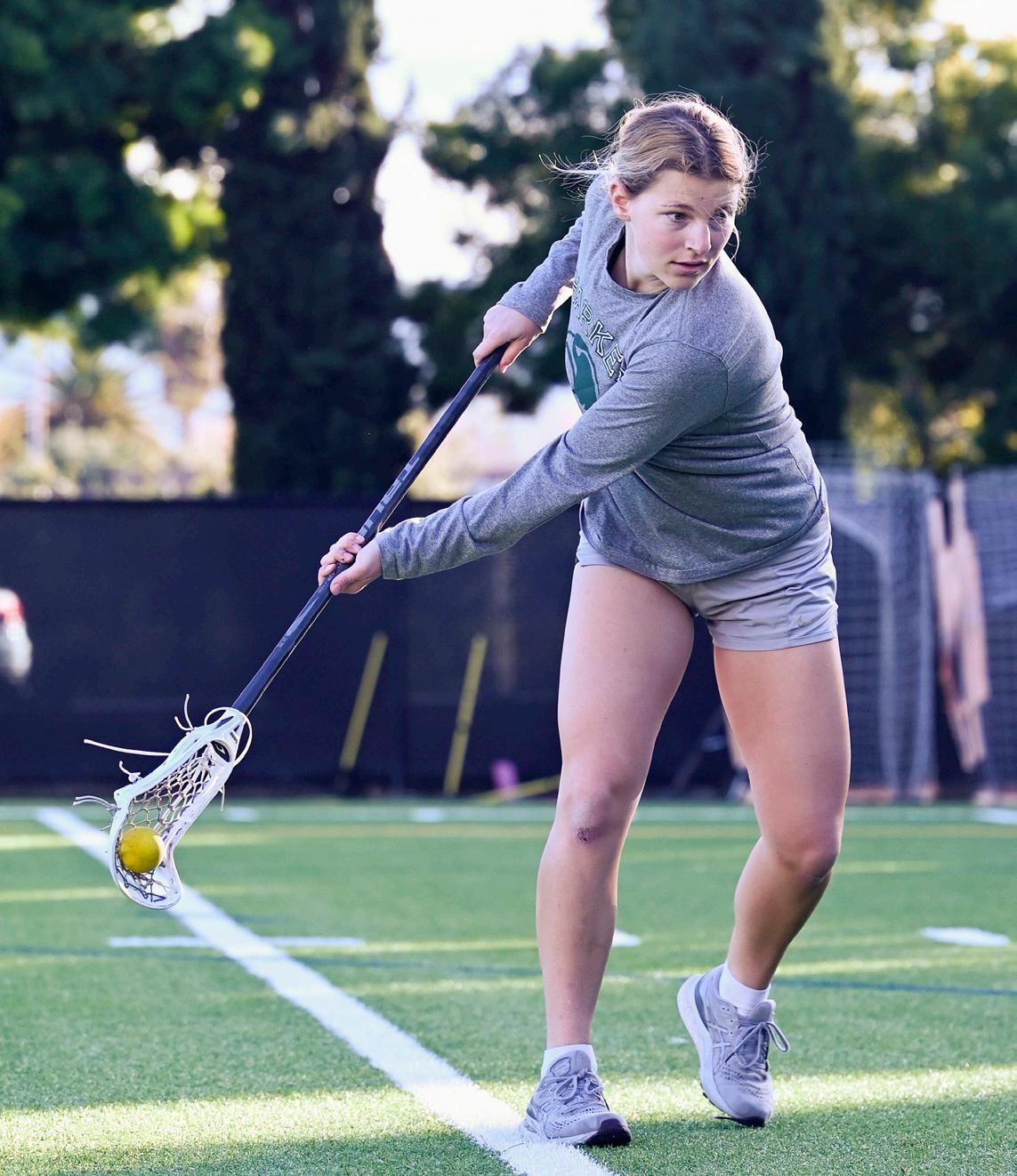




Vibrant colors soar as kids and adults fling gulal, or colored powder, at each other. Their once white clothes become dusted with colors of spring, resembling fields of flowers to welcome the new season. Unsuspecting participants soon find themselves drenched in water, and laughter fills the air.
Also known as the Festival of Color, Holi
celebration with around a thousand people. It was so amazing to see so many people gathered to celebrate this holiday, and the musicandfoodbroughtalotofexcitement.”
There are many different stories behind the origin of Holi. In many places, the festival is associated with the legend of the demon king Hiranyakashipu and his sister Holika. Holika attempted to kill Prahalad, a devotee of the Hindu god Vishnu, by burning him in a fire. Ultimately, she failed and ended up be-ing consumed in the fire herself. This story representsthe triumphofgoodoverevil.
While there are many legends behind the meaning of the holiday, it is also a way to greetspring.
“It’s a way of saying, ‘Oh, we’ve been in this bleak weather,’ so part of Holi is that spreading of colors to welcome the bloom-ing of the season,” upper school math teacher Dr. Anu Aiyer said. “The powders represent those flowers throughthecolors.”

is observed during March as a way to welcome spring and to honor the triumph of good over evil.
While mainly celebrated in India and Nepal, Holi takes place in many places across the world. During the festival, participants throw Gulal at each other, to symbolize the vibrancy of life.
For Saanvi Bhargava (10), Holi symbolizes joyousness, a celebration filled with people and colors. Normally, she celebrates Holi at home with her family and cousins, playing in the backyard with water balloons and gulal. Last year, her family attended a Holi celebration at Stanford, getting involved in the local community.

“Holi, to me, means fun and a huge celebration of color,” Saanvi said. “I remember when I was younger, my family went to a Holi
Other than the throwing of gulal, it is custom to light a bonfire that represents the burning of the demoness Holika.
Other traditions include making Gujiyas, which are dumpling-like desserts, filled with milk fudge and dry fruits. Many people also drink Thandai,a spiced milk drink, and Rice Kheer, anIndianricepudding.
"Good memories in-clude] eating good food, especially the sweets,” Dr. Aiyer said. “I mean it’s usually about people making elaborate things that you typically don’t make on a day to day basis. The other thing about Holi is that when I was a kid growing up in India,itwasfuntocelebrate.”
Visit harkeraquila.com for full article.
vika gautham & sarah mohammed
“Welcoming the blooming of the season”
“[Holi] is a way of saying, ‘Oh, we’ve been in this bleak weather,’ so part of Holi is that spreading of colors to welcome the blooming of the season”
DR. ANU AIYER UPPER SCHOOL MATH TEACHER OFFICE OF COMMUNICATIONS